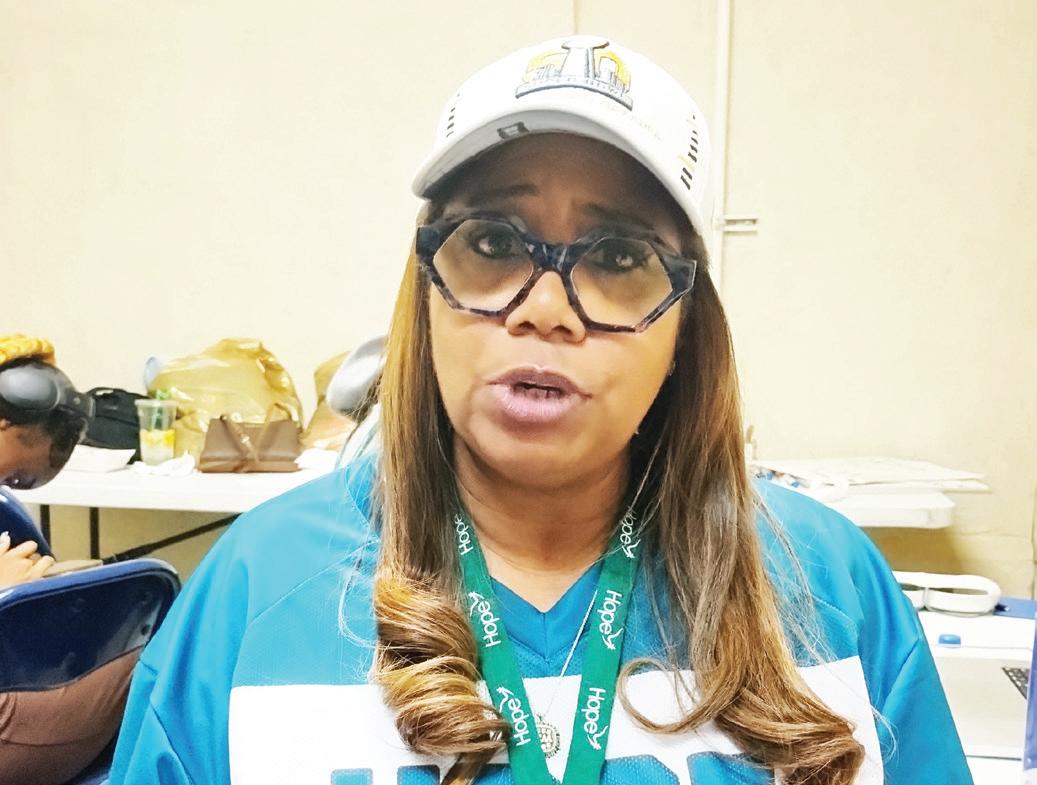




By Kiara Williams Staff Writer
ost in history — that’s what Lena Olive Smith almost was until Ann Juergen started looking into the woman’s prolific past. Though there were members of the Black community who knew of her legacy, when Juergen started her research in the early 90’s, there were little to no written records of Smith.
“I went to a conference in Washington, D.C., and a venerated, distinguished Black professor by the name of J. Clay Smith was writing a book, ‘Emancipation: The making of the Black lawyer 1844-1944.’
He saw me, that I was from William Mitchell [Law School], and he said, ‘One of the people I’m trying to find out more about, historically, is this woman lawyer – Lena O. Smith, who went to your law school.’
“And I said, ‘When I go back home, I’ll look her up and see what we have on her and share it with you.’ Because I didn’t know Lena Smith. I went back home and nobody knew a thing. So I thought if she’s the first Black woman lawyer in Minnesota, which J. Clay Smith thought, I needed to find out more about her.”
With the knowledge that Smith was a graduate of William Mitchell, known today as
Mitchell Hamline Law School, Juergens looked into internal records that led her to Smith’s graduation information. From there, she dug deeper.
A grant from the historical society gave Juergens the opportunity to take a sabbatical in 1995. During this time she was led back to D.C., where she would learn even more about Smith through her involvement in the NAACP.
Often signing her name as L.O. Smith, she began her professional journey as a real estate agent in Minneapolis. Through this work, she witnessed firsthand the systemic barriers that African Americans faced in securing prop-
By Clint Combs Staff Writer
el Shea Perry remem-
bers her son Hardell
Sherrell as “my baby,” despite his imposing 6-foot-4 frame. Perry recalled the gut wrenching moments leading up to his death, saying, “I didn’t know he was dying. I just thought he was really sick.” As the details of Hardell’s
tragic 2018 death emerged, a whistleblower complaint exposed serious failures in medical care at Beltrami County Jail. At the time, MEnD Correctional Care, the company responsible for providing medical care at the jail, was the state’s largest provider of medical services to correctional facilities.
According to the complaint, Dr. Todd Leonard, a key figure at MeND whose medical li-
cense was later revoked, was informed of a death at the jail.
“I heard him tell whomever he was speaking with that there had been a death in the Beltrami jail,” the complaint read.
“My heart sank because I knew it was probably Hardel.”
The whistleblower also voiced concerns about Hardell’s deteriorating condition, telling Dr. Leonard, “I disagreed
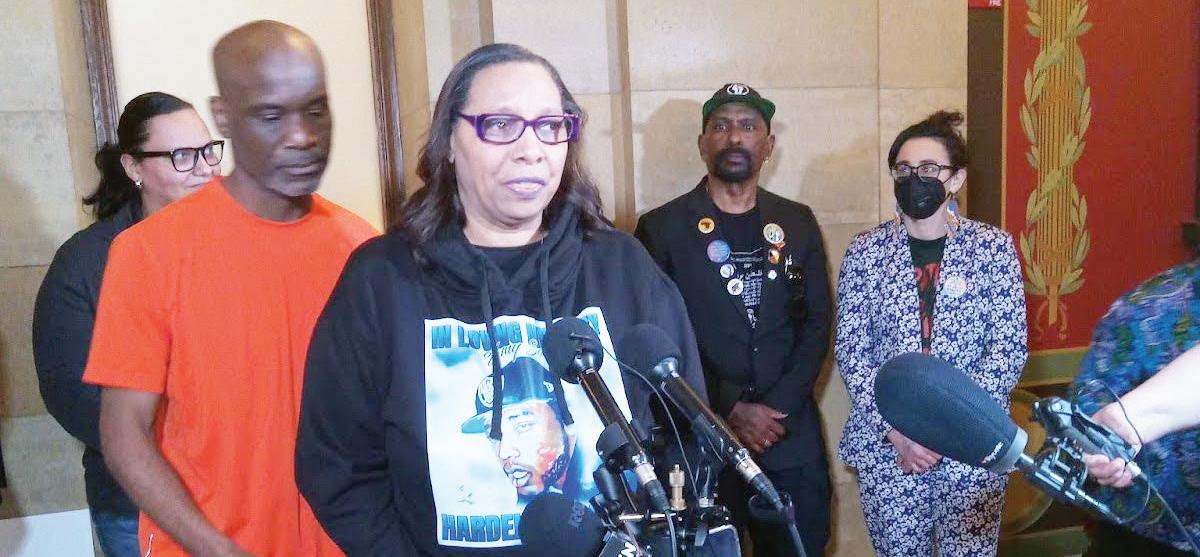
erty and equitable housing.
Determined to effect change, Smith enrolled in the Northwestern College of Law, attending night classes while continuing her real estate endeavors during the day. Both her office and classes were conveniently located in the Plymouth Building on 6th and Hennepin.
In 1921, she graduated and became the first Black woman licensed to practice law in Minnesota. From there, she advocated for fair housing long before the Fair Housing Act of 1968 and broke down barriers for the Black community in media, education and society.

By Kiara Williams Staff Writer
he Harlem Renaissance
was more than just a cultural movement — it was a rebirth of Black artistic expression that reshaped American literature, music and art. While many recognize the era’s male figures, the women of the Harlem Renaissance played an equally vital role in defining its legacy. During Women’s History Month, it is essential to honor the poets, writers, musicians and artists who not only shattered barriers in their fields, but also laid the foundation for future generations of women in the arts.
Literary voices that transformed a generation Women writers of the Harlem Renaissance captured the complexities of Black womanhood, race, class and identity.
Marita Bonner, known for her essays and plays, once said,
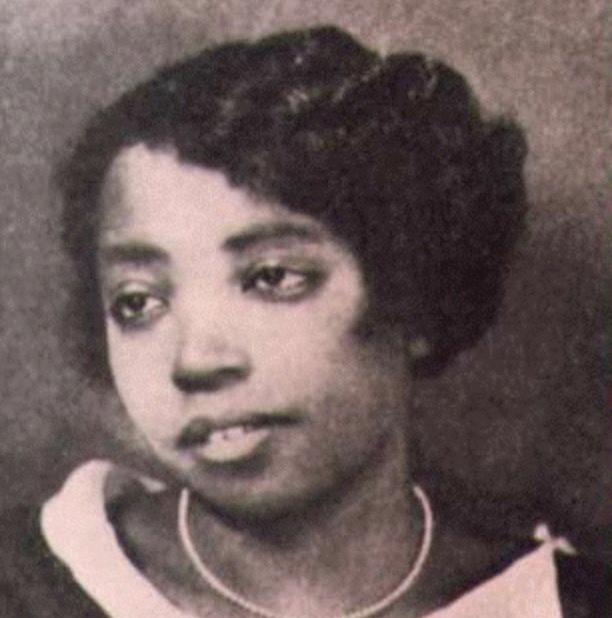
“You start out by being a woman and end up by being a symbol.” Her work delved into the struggles of African American women navigating a world of intersectional oppression.
Similarly, Zora Neale Hurston, author of “Their Eyes

By Aria Binns-Zager Staff Writer
he Harlem Globetrotters, the legendary basketball entertainers, brought their signature blend of athleticism, showmanship, and community engagement to Bryn Mawr Elementary School in Minnesota during their Great Assist tour, delighting students and staff alike. The visit was part of the team’s ongoing mission to inspire and entertain audiences of all ages.
Founded in 1926, the Harlem Globetrotters have long been more than just a basketball team. They played a crucial role in breaking racial barriers in professional sports, including paving the way for the integration of the NBA.
“We broke the color barrier in the game of basketball in 1950,” player Zeus McClurken said during the event. The first African American male to play with an all-white pro team was Nat ‘Sweetwater’ Clifton, and he was a former Harlem Globetrotter.”
During their visit, the Globetrotters engaged students in interactive games, showcasing
their incredible ball-handling skills and high energy tricks. The children had the opportunity to participate in drills, learn new moves, and even challenge the players in friendly competitions.
One of the highlights of the event was when McClurken demonstrated his favorite trick.
When asked what his favorite was, he replied, “See, that’s not a question I can answer. You gotta
see it. It’s called a brain hand spin.” The students cheered as the mesmerizing trick left them in awe.
In addition to the dazzling displays, the players shared personal stories and insights about their careers. Asked about the most unforgettable place he had traveled to, one player recalled, “I would say
■ See HARLEM GLOBETROTTERS on page 5

“Opportunity” magazines, weaving themes of racial pride and heritage into her poetry and prose. Her words remain as poignant today as they were then:
Were Watching God,” rejected narratives of victimhood, famously declaring, “I am not tragically colored. There is no great sorrow dammed up in my soul, nor lurking behind my eyes.”
Gwendolyn B. Bennett contributed to “The Crisis” and
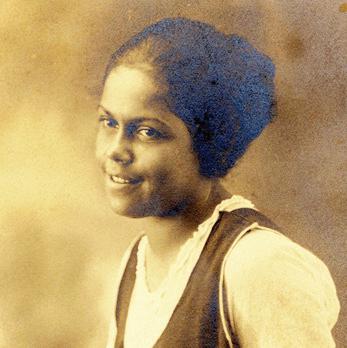
“We are molding future worlds, you and I, and we want them to be worlds in which our children can live.”
Likewise, Jessie Redmon Fauset, the literary editor of “The Crisis,” played an instrumental role in mentoring and amplify-

ing the voices of many Harlem Renaissance writers. She recognized literature as a force for change, stating, “I write because I feel that in writing, I am contributing to the development of the social structure of my people.”
Nella Larsen’s groundbreaking novels
“Quicksand” and “Passing” explored themes of racial identity and societal expectations. She articulated

By Clint Combs Staff Writer
Adriana Nixon, a 20-yearold mother, sprinted from her apartment on 2200 Blaisdell Ave, firmly holding her infant daughter, to join a press conference on 2119 Pillsbury Ave. Nixon’s urgency stemmed from the dismal conditions in her apartment complex: mold growing on her ceilings and near outlets, a damaged mailbox, and exposed mail cluttering the hallways.
“I was pregnant with my daughter, actually, and there was mold growing throughout my ceilings,” Nixon recalled. “It flooded my whole house.”
Nixon’s situation is far from unique. She is one of many tenants who have banded together, sending a joint letter to Investment Property Group (IPG) and staff at both 2200 Blaisdell Ave. and 1219 Pillsbury Ave., demanding action on issues of mold, security concerns, missing payments, and unprocessed checks.
Linnea Cavitt, a U.S. veteran who lives in Nixon’s building, echoed her frustrations. Cavitt, who relies on medication, had her prescriptions stolen from the building’s unsecured
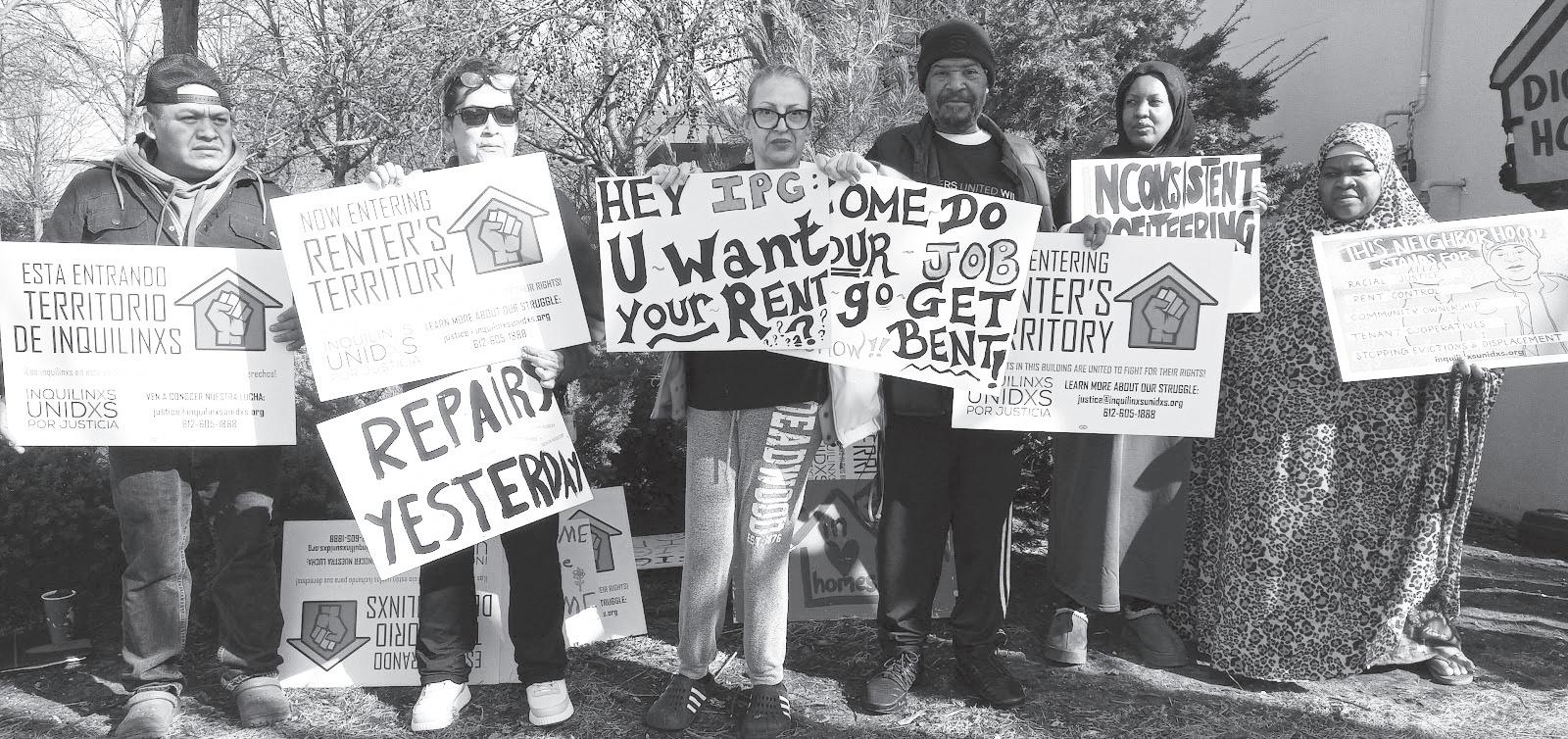
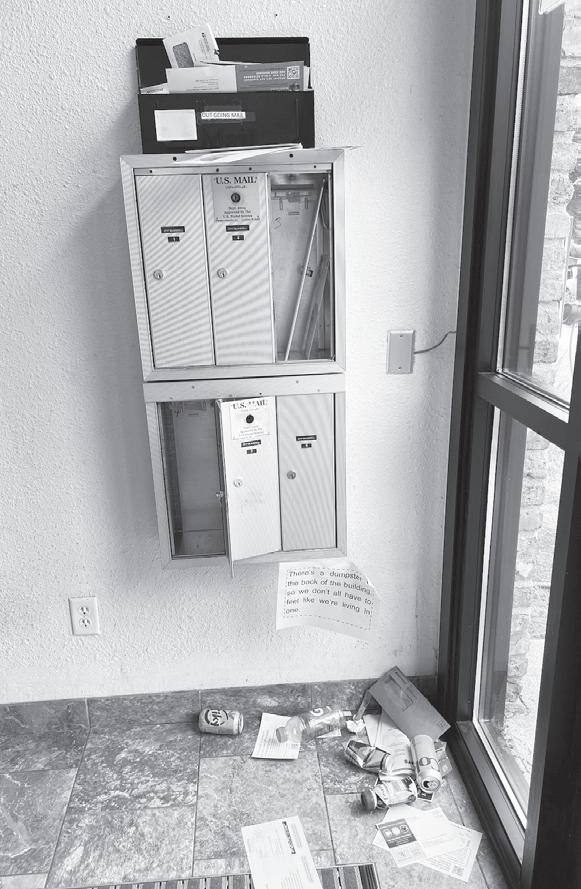
errors have led to the threat of eviction. Mack shared her concern about being evicted due to these accounting mistakes.
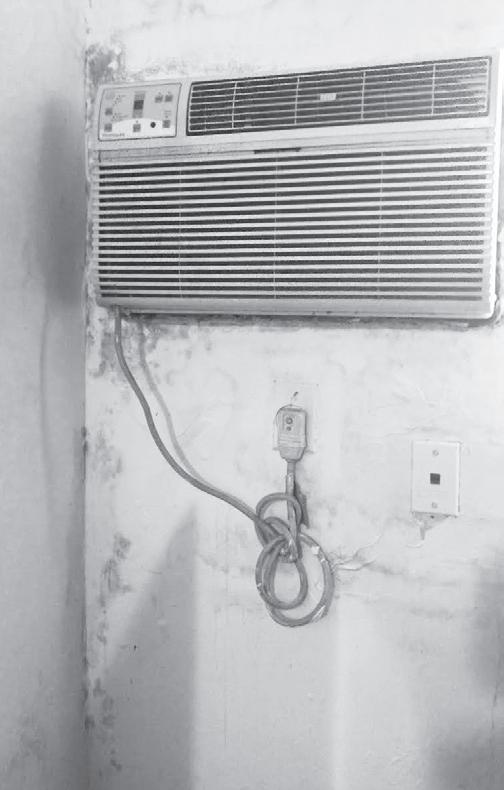
mailbox. “It took a good three weeks, and it’s a controlled substance,” Cavitt explained when trying to retrieve a new batch of medicine.
Security is also a major concern for tenants. “The cameras don’t work around here, so if anything were to happen, it’s basically on you,” Nixon added. “There’s nothing they can do about that, and so much more.”
Missing or unprocessed rent payments are further complicating matters. Cavitt, whose rent is partially covered by Veterans Affairs (VA), had her cashier’s checks go missing and/or unprocessed on multiple occasions. “Yes, it
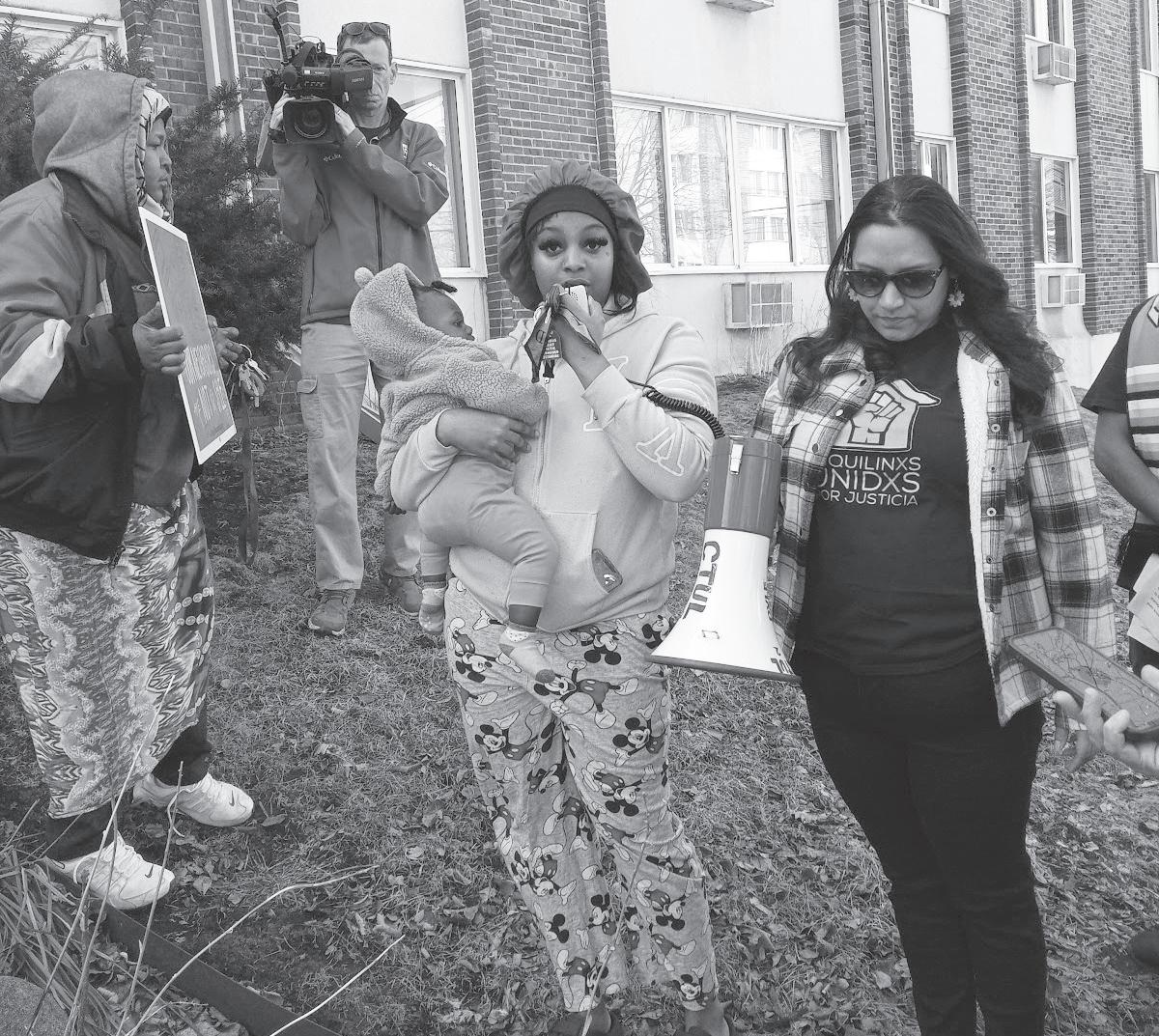
happened three times,” Cavitt said. “And lo and behold, it’s right there in front of them, but they haven’t gotten to it.”
Since IPG took over management in 2022, the problems have escalated. Michael Hru, a long-time tenant, recalled a security breach when a door was left wide open for an entire month. “We’re talking roughly a month — that door right there was open 24 hours a day,” Hru said.
Valerie Mack, 69, a resident who rightly feels she should be enjoying her retirement, instead of relaxing in her golden years finds herself cleaning up dog feces and acting as an informal security guard. In fact, during MSR’s interviews dog feces was visible not even a foot from a KSTP microphone lying in the grass, a reminder of the neglect.
To make matters worse, Mack has to contend with poorly maintained garages, where residents pay $50 per month for parking. “They used to take care of the garages when the previous owners were here,” Hru said. “They would paint the yellow lines to separate the parking spots. They don’t do that anymore.”
Mack’s frustration is compounded by a lack of communication from management. “I’m still not sure who is run-
ning this organization. I don’t know who I’m paying rent to,” Mack said. “They never communicate with us.”
Other residents, like Manuel Alvarez, also face similar struggles. Alvarez, who lives in the same building as Nixon, says he has had his maintenance requests ignored. “They told me, like, ‘You’re being so dramatic. You’re exaggerating this thing,’” Alvarez said. “I just need them to fix these issues, you know? I need the repairs done.”
“Since IPG took over management in 2022, the problems have escalated.”
One of the most pressing issues voiced by tenants is incorrect rent ledgers, which have caused significant financial distress. “What’s wrong with most of our ledgers? They’re not correct,” Mack said. “When you look at it, it looks like I owe you when I don’t, because you’re not putting the money in correctly. And there are missing money orders and checks. So now you’re making me pay for your mistakes.”
For some residents, these
among the
By Clint Combs Staff Writer
When the Taliban took control of Kabul in 2021, many American allies, including interpreters and Air Force personnel like Chris Wicker, faced immediate danger. Wicker, who served as an Air Force Intelligence officer, was one of several people assisted by Rep. Ilhan Omar’s office.
Omar, who represents Minnesota’s 5th Congressional District, worked to secure safe passage for these individuals. Some were relocated to the U.K. and Colorado, while Wicker was the last to return home.
“Chris had three translators that he was working with in that urgent first stage, and we were able to assist in making sure they had the right documents, were in contact with the right people, and were able to get on planes, saving their lives and restoring their safety,” Omar recalled.
After returning to the U.S., Wicker landed a job as the deputy director of the Small Business Administration’s (SBA) Minneapolis branch, where he played a pivotal role

in supporting local businesses.
“If you’ve ever set foot in the SBA office in downtown Minneapolis, you know that every single person there is passionate about this work,” Wicker said. “They want your business to succeed, even if it’s a crazy business idea.”
Wicker’s own entrepreneurial journey began in Kabul, where he started a cleaning business with SBA support. However, his career took a sudden turn when he was fired by the Department of Govern-
ment Efficiency (DOGE) led by Elon Musk.
“It is also a way of disrespect. It’s a way of neglecting our promise to veterans,” Omar said of the firing. “It’s a way of saying to the world that the United States is shamefully in the practice of making veterans unemployed, disrespected and disgraced.”
Wicker shared the details of his firing in an interview with MPR, explaining that he first learned of his termination through an email that
lacked any personal touch. “It just said, ‘Please see the attachment for an update on your employment status,’” Wicker said. He was given two weeks’ notice, and while his termination was initially rescinded, it was clear his job was at risk.
“It was 4:30 in the evening,” Wicker said. “I had no choice but to close my laptop. And that was the end.”
Rep. Omar has raised concerns about the broader impact of cuts proposed under DOGE,
“I am being evicted if I don’t get $2,000 tomorrow,” she said. “I went to court, came back the next day, and they gave me a brand-new lease.”
As tenants from 2119 Pillsbury Ave. marched to Blaisdell Apartments, they voiced their discontent and delivered their joint letter to the new property manager, Tina Johnson. Seen in a YouTube video titled “Minneapolis Tenant Activists submit a letter to property managers demanding cleaner apartments,” which was recorded during the action, Johnson answers the door to a hallway filled with tenants angry over the living conditions.
“I bet you dollars to donuts that you won’t be here by May,” Hru said. “Everybody’s going to resign.”
Johnson, who was recently hired, tried to calm the residents. Hru gave her the benefit of the doubt. “You’re in the hot seat. You just got here, we understand,” Hru said.
Johnson responded, “You’re going to give me some grace. I appreciate that.”
“Have somebody else do security,” Mack said, referencing the ongoing security concerns.
“There’s been as much turnover in this office as in a fastfood restaurant,” Hru added.
“Hear what I said? In 29 months, at least 20 different people have come and gone — maintenance workers, office staff, you name it.”
The event concluded with advocates, organizers and supporters returning outside to discuss next steps.
Clint Combs welcomes reader responses to ccombs@spokesman-recorder.com.
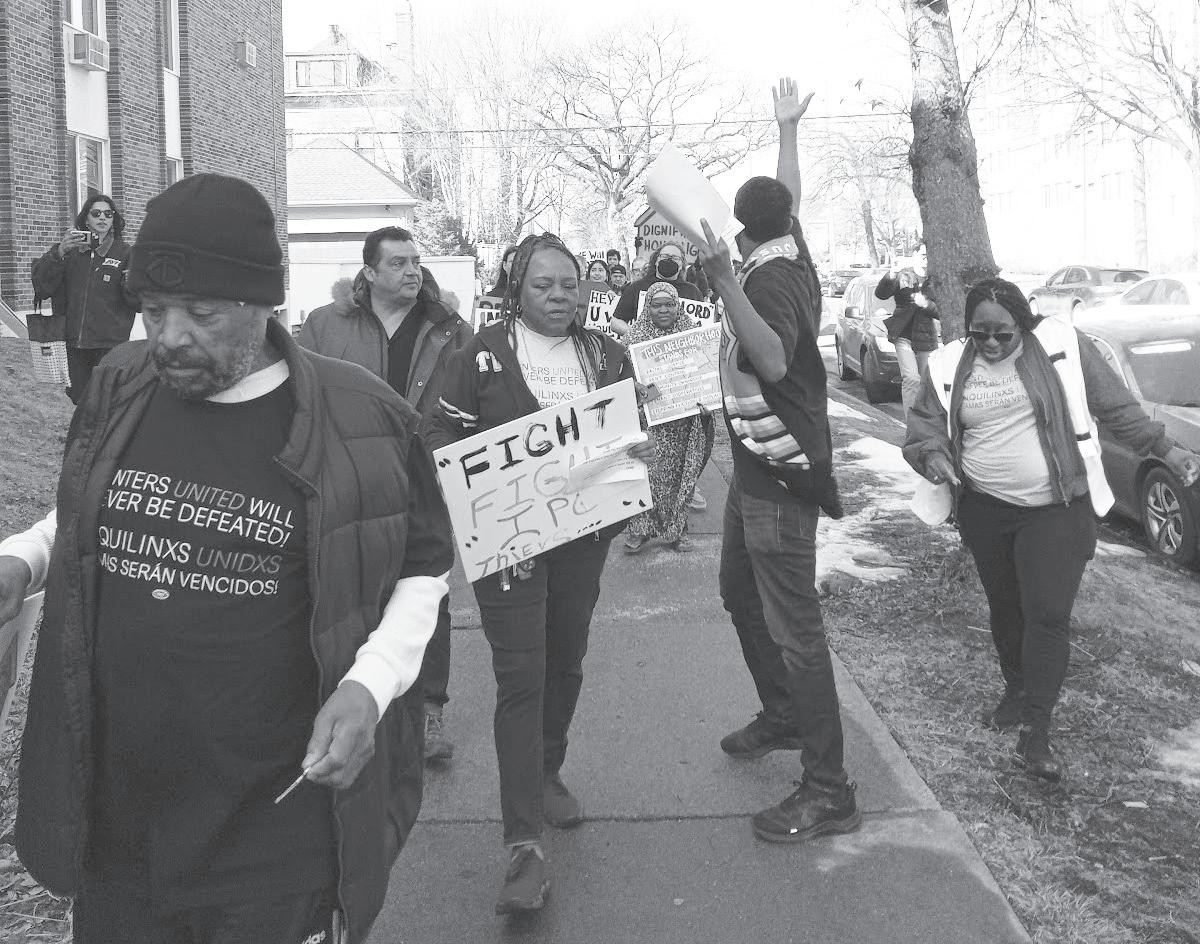
especially in Minnesota, where they threaten small businesses and university research.“We’re hearing from worried U of M employees who rely on grants to do incredible research,” Omar said. “We’re hearing from small business entrepreneurs who will now have their resources delayed and their dreams denied. It’s been really a hard time for so many Minnesotans and so many people across the country.”
“Elon Musk has turned his wealth into political power.”
At the University of Minnesota, proposed funding cuts could reduce federal research grants by up to $130 million annually, which could delay advancements in medicine and health care.
“These cuts would impact crucial biomedical research and could delay lifesaving treatments,” said U of M President Rebecca Cunningham. A federal judge has temporarily blocked these cuts, but uncertainty remains.
The issue also highlights the growing influence of wealth on government policy. Critics argue that billionaires like Musk, who can now pour un-
limited money into political campaigns following the Citizens United ruling, are using their financial power to shape policy in their favor.
“Elon Musk has turned his wealth into political power,” said Erin Chlopak, senior director for campaign finance at Citizens United. “He’s influencing who gets into government and who benefits from government decisions.”
U of M Law Professor Nick Bednar warned that DOGE’s push for special government employees — who can work for less than 60 days — could allow billionaires to avoid financial transparency. “These special employees have fewer reporting requirements, which is appealing to those who don’t want to disclose their financials,”
Bednar told “Wired” last month, “With agency approval, they can continue contracting with the government if they represent a corporation with many government contracts.”
As these proposed cuts and concerns continue to unfold, Wicker’s story serves as a stark reminder of the broader implications of government changes for federal workers, small business owners, and the communities that rely on them.
Clint Combs welcomes reader responses to ccombs@spokesman-recorder.com.
By Albert — UCare plan de-complicator
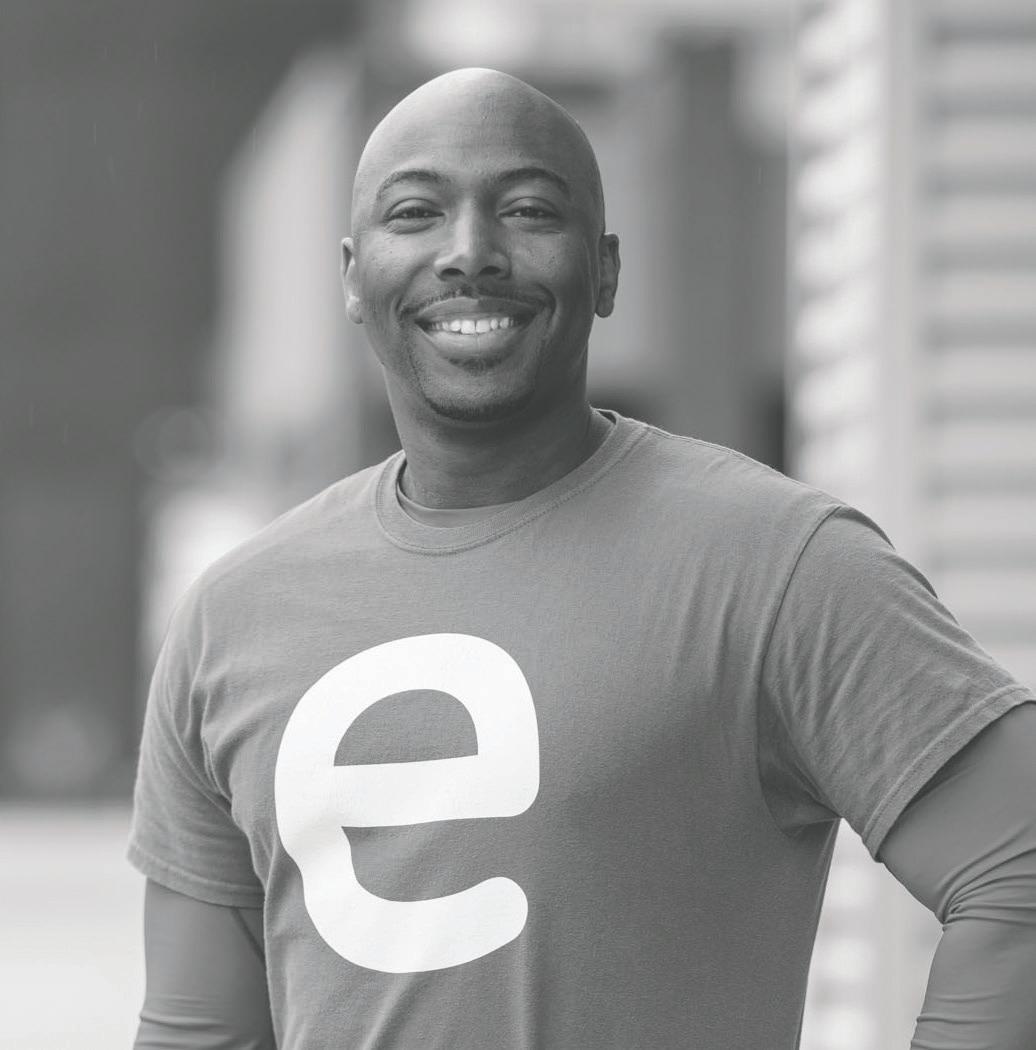
When you reach Medicare age, it can be a little overwhelming. It’s like a whole new puzzle of health plan coverage that needs to be solved. There are many who call me and ask, “Can you just put it together for me?”
At UCare, we can certainly do that. But we also really want members to understand what they are getting and why. The plan you select all depends on your life and what kind of coverage you need and don’t need.
Apart from Original Medicare, there are two plan types that people who are aging into Medicare gravitate toward: Medicare Advantage plans and Medicare Supplement plans. Let’s dive in.
Think of a Medicare Advantage plan like a bundle of benefits. It combines your Original Medicare, Part A (hospital insurance) with Part B (medical insurance). UCare Medicare Advantage plans give you extra coverage and benefits like dental, prescription eyewear and hearing aids. Most plans also include prescription drug coverage (Part D), which can become increasingly important as you age.
UCare has been offering Medicare Advantage plans since 1998 — longer than any
other health plan provider in Minnesota. And today, they’re some of the most popular plans. We have a range of Medicare Advantage plans to choose from that include coverage while you travel and allowances for over-the-counter purchases.
One more thing: UCare Medicare Advantage plans work fantastically for local Minnesotans, due to their large network that includes 97% of Minnesota medical clinics and hospitals.* So if you have a clinic you’ve always used, your chances are good that it’s in-network. And with no referral needed to see a specialist, getting the care you need is easy.
A Medicare Supplement plan is something you pair with your Original Medicare. In other words, it supplements your plan. Get it? These policies help pay for the out-ofpocket costs that are not covered by Original Medicare (Part A and Part B).
The main benefits of a UCare Medicare Supplement plan is protection and predictability. You will have low or no copays or coinsurance when you get care, so your costs are predictable. Your monthly premiums are your main costs — no more unexpected medical bills. Speaking of, UCare’s Medicare Supple -
ment plans offer some of the lowest Medicare Supplement premiums in Minnesota.
Another great benefit of a Medicare Supplement plan is the nationwide coverage. You can see any doctor who accepts Medicare patients, anywhere you go in all 50 states. This is especially useful whether you’re traveling, moving or living in a place where there are fewer providers nearby.
You also get extras like no-cost fitness memberships and discounts on hearing aids.
Why roll with UCare?
I’ve just gone over a couple categories of plans, but please know that we have a variety of plans for everyone, all across Minnesota! Each of them is designed to meet your health and lifestyle needs. The best way to know which one is right for you is to sit down with a broker, or someone like myself, to help find the plan that’s right for you.
Finally, I’ve been riding with UCare for nearly 10 years now, and I can honestly tell you — it’s the people who make our company go. That’s why we often say we’re “people powered” — never stopping until we know that you understand your plan and you’re comfortable with it. And if there’s ever a problem, we don’t send you up a phone tree. We work the problem individually until it’s solved. It might be why nearly 95% of UCare Medicare Advantage members choose to stay with UCare year after year.**
If you have any questions about anything I’ve covered, you should reach out to your local broker. They can help you decide which plan makes the most sense. Visit ucare.org/ma to find a broker near you.
You can also give UCare a call at 1-866-460-5093 or stop by the headquarters in NE Minneapolis or our Duluth office.
UCare headquarters
500 Stinson Blvd NE Minneapolis, MN 55414
Monday – Friday, 9 am – 4 pm
UCare Duluth office
325 West Central Entrance Suite 200 Duluth, MN 55811
Monday – Friday, 9 am – 4 pm
*Based on 2023 CMS data
Based on internal UCare enrollment data from 2022 compared to 2021
By Ayanna Quamina, N.D. Columnist
As a family practice naturopathic doctor for the past 15 years, I’ve treated hundreds of patients and have noticed that conditions tend to follow a similar theme. For instance, there are periods of time when I see a series of patients working on thyroid-related symptoms, patients who all happen to need assistance with balancing their blood sugar, or a stream of women all wanting help with their hormones.
Interestingly, since Covid I’ve consistently been treating patients who are all dealing with conditions or symptoms related to stress. No matter what the individual symptoms are, the root cause is related to their levels of stress and their body’s inability to manage it. I thought it might be helpful to give a bit of background information on stress — what it is, how it affects you, and what you can do to offset it.
Four major types of
There are multiple kinds of stress. Four major types are environmental, chemical, physical, and emotional. Each type can affect different parts of the body, have different symptoms, or require their own treatment approach.
Environmental stressors come from pollutants in the air and enter the body through the lungs or skin. When we inhale toxins or they come through the pores, it can cause damage to our cells. Long term exposure can cause symptoms like difficulty with breathing, shortness of breath, allergies, or asthma.
Chemical stressors tend to come from things we eat or drink. Chemicals, plastics, toxins, drugs, alcohol, and excess sugars or saturated fats can all negatively affect the body in a variety of ways. These stressors can cause symptoms like stomach upset or headaches, or it can even get deeper into the system and negatively affect hormone balance.
Both environmental and chemical stress affect the tissues and cells of the body. Toxins can get past the cellular structure and cause damage to cell mitochondria and DNA, affecting overall cell functionality.
Physical stress, on the other hand, affects the body through inflammation. When you work your body too hard (i.e. extreme athletes or weekend warriors) or too little (like sitting for long periods of time), inflammatory markers are released and can cause wear and tear of the system. Sore joints, chronic pain, and circulatory issues can all be related to physical stressors.
Emotional stress is possibly one of the most insidious and hard to treat. It may be because emotional stressors can affect all areas of the body and show up in more subtle ways than the other types of stress — all of the organ systems, tissues, individual cells, and even the DNA can be affected by emotional stress. When someone is experiencing




due to modern society’s demands we each take on multiple sources of stress every day. This can cause an additive effect and make it hard for the body to rebalance and heal. One single day can include every type of the stressors listed above.
Think for example how the typical day for the average
you giving your body things to help it work better or are you making it work harder?
Are you giving yourself enough rest on a consistent basis? Or are you taking on more than you should?


“No matter
general symptoms like chronic headaches or stomach pain, it can be hard to determine the original cause or source.
What your body does with stress
When the body perceives a danger, whether from seeing, hearing, feeling, or thinking about a possible source of stress, it releases cortisol. Cortisol puts the body into a sympathetic state (aka fight, flight, freeze or fawn) so you can get to a safe space until the danger passes. This process works great for short-term needs. However,
American starts after having a night of poor sleep. Then they have a breakfast of coffee and sugary or fried food. They drive through traffic to work a job they might minimally enjoy, then rush back home to deal with home stressors.
Then they end the day by sitting for hours, usually scrolling or binging, before going to bed later than they know they should. This same cycle then continues for the next day, the next week, next month, and so on.
Sound familiar? If this doesn’t describe you, it’s most likely reality for someone you know. Pretty depressing, right?
Reprioritization is the solution
The good news is that the body is made to heal itself — it just needs your support. Start by taking a look at your daily habits. What foods are you eating on a regular basis? Are
Let’s face it, we’re all under tremendous amounts of stress these days. A lot of it can be outside of our direct control, but it can help to focus on the stressors you can control.
Place priority on areas like your food and eating habits, movement and exercise, sleep and restoration, and stress management to offset the negative effects those different kinds of stress can cause.
Take care of yourself so your body can keep doing the tough job of not just keeping you alive, but helping you continue to live your best life.
Dr. Quamina is an experienced naturopathic physician, educator, and best selling author. With over a decade of experience practicing naturopathic medicine, Dr. Q helps identify the root cause of illness and discomfort and provides guidance towards restoration. For more information, visit drayannaq.com.

Continued
Championing civil rights in the courtroom
Smith’s legal career was marked by unwavering advocacy for her community. Through her education, involvement in the NAACP, and untiring effort, Smith leveraged every resource available to her to balance the justice scale for her people.
One of her most notable cases in her 45-year legal career involved representing the Lee family in 1931. The Lees, an African American family, had moved into a predominantly white neighborhood in South Minneapolis, sparking hostility and violent threats from white residents.
Continued from page 1
that there was nothing wrong... Vital signs and ECGs don’t lie, both of which were consistently abnormal with Hardel.”
Despite the warning signs, Dr. Leonard dismissed the concerns, telling the whistleblower not to “jump to conclusions,” adding that such actions “could jeopardize his company.”
Sherrell’s preventable death led to charges of manslaughter and medical neglect against former director of nursing Michelle Skroch.
The situation escalated when Sherrell repeatedly begged for medical attention, with staff at the facility reportedly dismissing his pleas, thinking he was faking his symptoms. The whistleblower
“Arthur Lee had served in WW1 and was in the American Legion. The American Legion provided him with an attorney; H.E. Maag. But that attorney was like, ‘Look, I’m going to get you some time, some money, and then you can move.

Lees’ home, located at 4600 Columbus Avenue South, as well as Smith’s located at 3905 5th Ave. S., are recognized as historical places.
Smith’s involvement in the NAACP is essential to highlight; she joined in the 1920s as the head of the Legal Redress Committee. Her strong legal reputation soon led her to serve as president of the Minneapolis chapter from 1930 to 1939, before heading the Redress Committee again in 1940.
ures lobbied with the help of legislators to ensure the movie was not shown. This battle was settled when a local theatre finally surrendered after its license was threatened by the city.
Challenging the racial landscape
Continued from page 1
Uzbekistan. I went to Uzbekistan with TNT. It was an amazing experience just going to a city that I had never heard about before.”
Another Globetrotter joining McClurken was TNT Lister, who emphasized the importance of perseverance and resilience. “You have to believe in yourself, even when others doubt you. We travel the world meeting kids from all walks of life, and our message is always the same — dream big and work hard.”
Continued from page 1
the inner turmoil of many Black women in her works, posing the question, “Why couldn’t she have two lives, or why couldn’t she be satisfied in one place?”
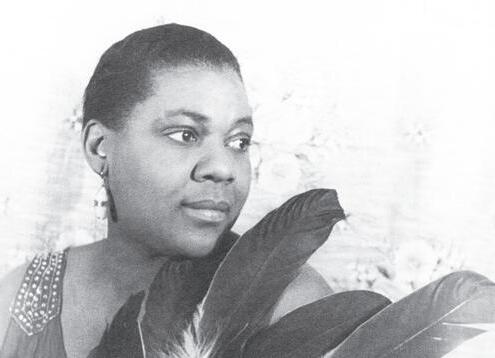
“And Lena — they were members of the NAACP — she talked to the Lees and said, ‘If you move and let them buy you out, you are just supporting their narrative that Black people move into white neighborhoods just to be bought out at a higher price than they paid and make money. And that isn’t true.’
“Then you have Arthur Lee
Smith, serving as their attorney and as president of the Minneapolis NAACP, defended the Lees against both legal and extralegal attempts to force them from their home. Prior to this, the Lee family was provided a lawyer by the American Legion who encouraged them to sell and move out.
overheard a medical tech and RN at the jail saying Sherrell was “faking being paralyzed” and “faking being incontinent.”
Even though his vital signs indicated severe medical issues, including a dangerously high heart rate of 132 beats per minute, his requests for care were ignored.
A thorough review by the Minnesota Department of Corrections, including over 400 documents and 800 video clips, revealed that Beltrami County Jail violated several standards. These included failing to conduct proper well-being checks, misdiagnosing Sherrell’s condition, and delaying his transfer to a hospital. The findings pointed to systemic failures in the jail’s medical procedures that contributed to his death.
“This feels like small vindication because, as I said, no matter who gets criminally charged, it will never compare
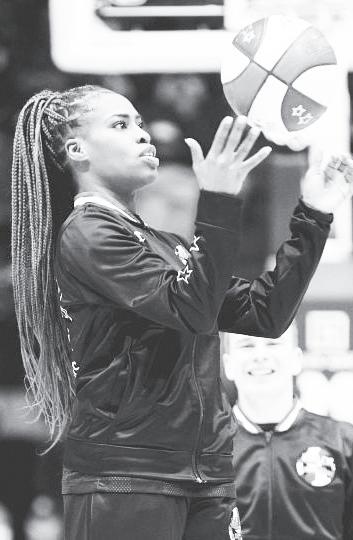
quoted in the newspaper saying, ‘Nobody asked me to move out when I was fighting for this country in France… All I want is my home, and I have a right to establish one and live in it.’ However, the media reported his former attorney’s words instead, that the Lees would move for the right price,” Juergen said.
In the end Smith’s efforts not only protected the Lee family’s rights but also highlighted the pervasive racial tensions in Northern cities from the neighborhoods to the newsrooms. Today the
to the sentence I got, which was a life sentence. My baby is gone,” Perry said during a press conference at the Minnesota State Capitol March 11, where the charges against Skroch were announced.
“Hardell should have been here today. He wasn’t doomed to die. He had a condition that was treatable,” said Zorislav Leyderman, the attorney representing the Sherrell family, speaking at the same press conference. “He wasn’t faking, as everyone thought. He was just fighting for his life.”
The charges against Skroch are part of a larger conversation about the quality of medical care in jails and prisons, and the ongoing issue of medical neglect faced by incarcerated individuals. Advocates like Danielle Mathias, senior organizer at the Minnesota Freedom Fund, are calling for stronger legal protections to prevent
Beyond the court, the Harlem Globetrotters have served as cultural ambassadors, showcasing Black excellence and perseverance. For nearly a century, they have uplifted communities, reminding young athletes that sports can be a powerful force for change. “Representation matters. When kids see us doing what we do, they realize that they too can reach for greatness,” Lister explained. Their performances have historically provided a sense of joy and pride in Black communities, particularly during times when opportunities were scarce. The Globetrotters’ legacy is a testament to overcoming
Then it will take care of you.”
In another significant case, Smith and the NAACP worked hard to protect the safety and reputation of Black people as they fought against the public viewing of the 1930 film, “Birth of a Nation.” In her fight against the media, Smith wrote an affidavit stating, “It is historically false as characterizing the Southern negro as brutal, inhumane, and treacherous, as a ‘humiliating caricature of the Colored Race’...the play has a tendency to result in despairing remarks regarding negroes and subjecting them to indignities in public places.’”
Smith and other public fig-
In the early 20th Century, the prevailing narrative suggested that racism was predominantly a Southern affliction, with the North perceived as a haven of equality and progress. However, this perception often obscured the subtle yet pervasive forms of racial discrimination that existed above the Mason-Dixon Line (a demarcation line separating four U.S. states).
Minnesota, with its seemingly progressive stance, was no exception. Despite laws prohibiting segregation and promoting civil rights, African Americans in Minnesota frequently encountered exclusionary practices in housing, employment, and public accommodations.
Furthermore, the 1920 Duluth lynchings, where three
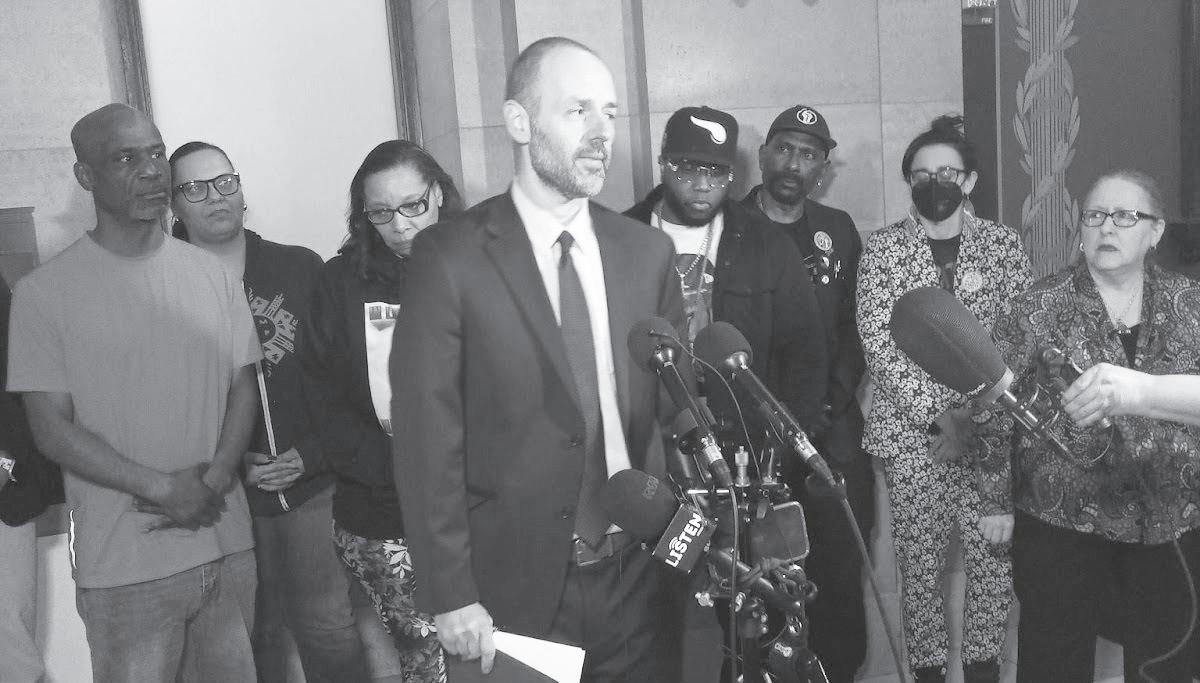
such incidents. “No one should have to beg for medical treatment. No one should be subjected to cruel and preventable suffering,” Mathias said.
The Hardel Sherrell Act was passed in 2021 to address neglect in correctional facilities. Data from the Minnesota Department of Corrections showed that 20 people died in Minnesota County jails in 2024, up from 13 in
adversity and using sports as a vehicle for social progress.
2023. Advocates argue that enforcement of these laws has been poor. Mathias also urged lawmakers to support the act, which would further strengthen medical care protections for incarcerated individuals.
Amid these ongoing struggles, legal experts like Zorislav Leyderman emphasize the importance of documenting incarcerated individuals’ experiences. “The problem is that people who
health and wellness, education, and community empowerment.
“Representation matters. When kids see us doing what we do, they realize that they too can reach for greatness.”
As the Harlem Globetrotters continue their 2024 World Tour Presented By Jersey Mike’s Subs, they carry with them the spirit of teamwork and empowerment, inspiring others to pursue greatness both on and off the court. Through the Globetrotters’ Goodwill Ambassador Initiative, they aim to drive change and impact in crucial areas such as
The Great Assist Tour combines basketball with recognition and celebration for everyday heroes who make a difference by giving “great assists” to others. By shining a spotlight on these remarkable individuals, the Harlem Globetrotters remind us that greatness is not only defined by individual accomplishments
Black men were brutally murdered by a white mob, starkly highlighted that racial violence was not confined to the South. This dichotomy between perception and reality set the stage for changemakers like Lena Olive Smith, who confronted these injustices head-on.
Smith herself experienced discrimination; during her law school years, she was denied entry to a theater based on her race. Undeterred, she sued the establishment under Minnesota’s Public Accommodations Act, challenging the status quo and advocating for equal treatment.
There are many parallels between then and now as pertains to the covert nature of racism in Minnesota. However, with Lena Smith etched into the history of law and order, she will forever serve as inspiration for aspiring Black professionals and as an example of what is possible when you embody the spirit of relentlessness and courage.
Kiara Williams welcomes reader responses to kwilliams@ spokesman-recorder.com.
are incarcerated cannot choose their own care. The best advice I can give is to keep a record of what’s happening,” Leyderman said. “Try to reach out to your loved ones to explain what you’re experiencing.”
Michelle Gross of Communities United Against Police Brutality echoed this advice, urging families to take an active role. “One of the first things I say to families when they call is that they need to get on the phone with health services and demand care. This is not something you can remain silent on,” Gross said. “The more people that call, the more likely it is that a person will get care.” Skroch was arrested two weeks ago and is scheduled to appear in Beltrami County Court on April 11.
Clint Combs welcomes reader responses to ccombs@spokesman-recorder.com.
but by the collective efforts of a community working together towards a common goal.
As the event at Bryn Mawr elementary came to a close, the Globetrotters left behind not only memories of laughter and excitement but also a powerful message of perseverance, unity, and the joy of the game. With nearly a century of history behind them, the Harlem Globetrotters continue to inspire and entertain, proving that basketball is more than a sport — it’s a way to bring people together.
Aria Binns-Zager welcomes reader responses to abinns@ spokesman-recorder.com.
Pioneers in music and visual arts
Beyond literature, the Harlem Renaissance flourished with musical and artistic innovation.
Bessie Smith, dubbed the “Empress of the Blues,” revolutionized the music industry with her powerful vocals. She understood the dedication required for success, stating, “You got to love your work and keep at it.
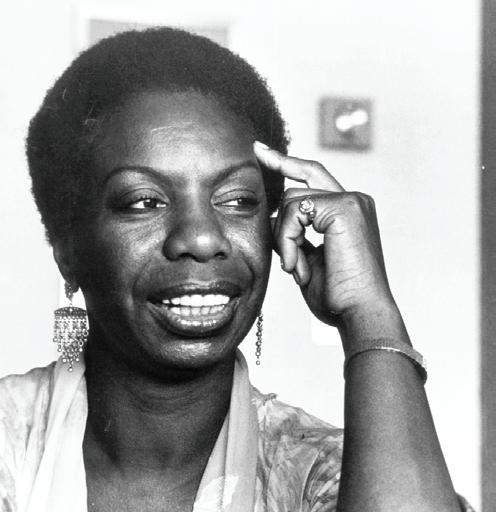
Decades later, Nina Simone carried forward the tradition of using music as a form of activism, boldly asserting, “I choose to reflect the people’s rage, their emotions, their pain. I want them to feel that I’m expressing their feelings.”
In the realm of visual arts, Augusta Savage shattered racial
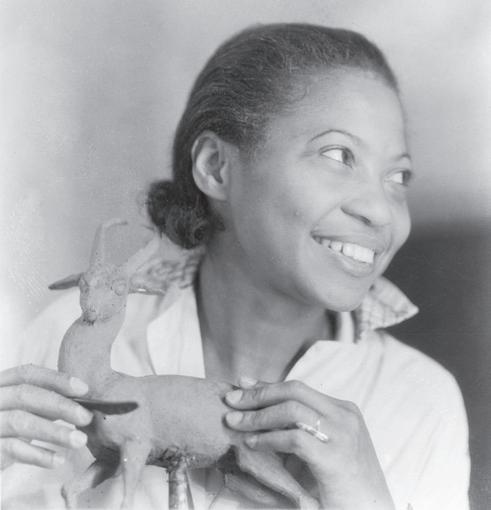
and gender barriers in sculpture. Despite facing financial struggles and discrimination, she remained undeterred, believing in the power of mentorship: “I have created nothing really beautiful, really lasting, but if I can inspire one of these youngsters to develop the talent I know they possess, then my monument will be in their work.”
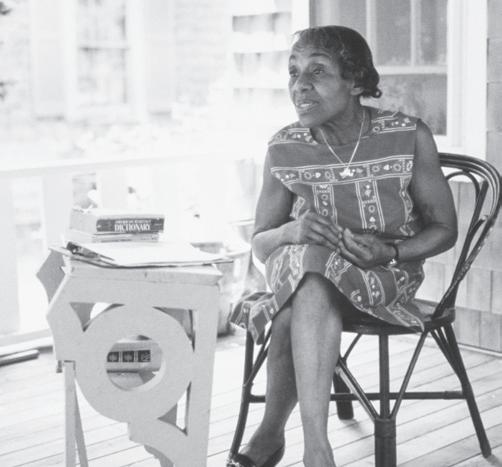
Savage’s leadership helped countless Black artists gain recognition, paving the way for future generations in fine arts.
The legacy of Harlem Renaissance women
The influence of these women extended far beyond their lifetimes. Dorothy West, one of the last surviving members of the Harlem Renaissance, reflected on the movement’s impact, stating, “There is no life that does not contribute to history.” Their contributions were not merely artistic — they were revolutionary acts of defiance against a society that often sought to silence them.
During Women’s History Month, we celebrate these trailblazers who defied expectations, broke barriers, and created
“There is no life that does not contribute to history.”
works that continue to inspire. Their legacy is a reminder that art and activism go hand in hand and that the voices of women, particularly Black women, must never be overlooked. The Harlem Renaissance was not just a moment in history — it was a movement, one that still echoes in today’s fight for representation and equality.

By Kiara Williams Staff Writer
Becoming a trailblazing entrepreneur isn’t just about building a business — it’s about shaping industries, creating opportunities, and making a lasting impact. In this edition, Nancy Korsah shares key insights to pioneering a successful business.
Coming from Italy with Ghanaian roots, Nancy Korsah shares that her entrepreneurial journey was deeply influenced by her father, a businessman whose resilience and resourcefulness left a lasting impression on her. Watching him build something from nothing instilled in her a belief that business could be a tool for empowerment and financial freedom.
However, it wasn’t just familial influence that shaped her path. It was also a defining moment of exclusion that would inform her entrepreneurial mission. “When I moved to Minneapolis, I worked with the same employer. When I went to the building, the security guard would not let me in.
He said I did not look like I belonged there,” Korsah recalls.
She says that moment of rejection was a turning point.
“It’s not that feel-good story that ‘Oh, I’m learning all this financial literacy and I’m going to share it.’ No. The story was people like me were looked at as less than, and [to them] I didn’t look like I belonged in an expensive building.”
She says that experience
fueled the creation of Black Business Enterprises (BBE), a community-driven initiative dedicated to supporting and uplifting Black entrepreneurs. But launching BBE was no easy feat. Nancy balanced a full-time job, often working up to 12-hour shifts, and then devoted her evenings and weekends to building the organization.
“On weekends, I would dedicate every spare moment,” she says. “I worked nearly 20 hours a day between my full-time job and building this [BBE] just so that it could become something. And it did,” Korsah shared in a podcast episode of “Always This Good.”
The entrepreneurial mindset Korsah’s story is a testament to the power of visionary thinking. She says she saw an urgent need within her community for resources and guidance for Black entrepreneurs, and took action.
“My inspiration for entrepreneurship began when I moved to America from Italy. I quickly realized the abundance of opportunities available here and how business could be a powerful vehicle for financial freedom. Witnessing firsthand how entrepreneurship could lift people out of poverty deeply resonated with me.”
Korsah self-describes her approach to DEI and business as “unconventional.” Rather than following existing models, she designed BBE to specifically address the barriers Black entrepreneurs face. “I


was determined to figure out what I could do to help people of color do better and just figure out what it was we needed to do to not be seen as if we didn’t belong.”
She says she recognized that many struggled with securing funding due to a lack of proper documentation and compliance knowledge. To bridge that gap, she created workshops and consulting services that walk business owners through the process, increasing their chances of success.
Over the years, BBE has expanded to its own brick and mortar location in downtown Minneapolis. Now, business owners can use this space for co-working, hosting events, conducting meetings, and consulting with subject experts as it pertains to growing their enterprise.
Membership offerings include, but are not limited to, web and brand development, content creation, virtual assistance, exclusive access to the BBE social media platform, as well as free initial and annual business filing.
Taking risks, creating change
Korsah says trailblazers understand that risk is an inherent part of growth. She says she took a significant leap of faith by launching BBE without

“At the time, there were many uncertainties. Would business owners trust my guidance? Would I be able to create sustainable revenue streams? But I believed in my vision and knew the need was there.
“By taking a strategic approach — focusing on relationship-building, offering exceptional value, and gradually expanding my services — I was able to turn that risk into a thriving enterprise. Today, I’ve helped countless business owners gain funding, navigate regulations, and scale their companies, proving that taking the leap was the right decision.”
coming business owners.
“I believe in paying it forward by sharing my knowledge and experiences,” she says. “Feedback is crucial, whether from clients, peers, or my team. Growth comes from continuous improvement.”
Defining a legacy Nancy Korsah’s journey from an exclusionary encounter at a corporate job to leading a movement of empowered Black entrepreneurs is nothing short of inspiring. Her resilience, innovation, and dedication to communitybuilding have made BBE more than just an organization — it’s a force for change.

external funding. “I invested my own resources into building something that focused on supporting minority-owned businesses, knowing that if I could prove its value, success would follow.
Korsah acknowledges that no entrepreneur succeeds alone. While trailblazers are known for their independence, they also recognize the power of collaboration. She has built strong relationships within her community, fostering a network where entrepreneurs can support one another. She also prioritizes mentorship — both receiving guidance from industry leaders and offering her own insights to up-and-
“I worked nearly 20 hours a day between my full-time job and building BBE just so that it could become something. And it did.”
When Black business owners come together and recognize each other’s accomplishments at the Black Business Ball (hosted by BBE), this sentiment is further solidified.
“This was such an amazing night. I loved networking and getting to know the business community!” said Tetee, owner of Africa’s Fine Designs, as she recalled the Black Business Ball of 2024.
With the right mindset, collaboration, and willingness to take risks, Korsah believes that anyone can become a leader in their industry and redefine what’s possible for future generations.
For more information on Black Business Enterprises, visit their website at blackbusinessenterprises.org or stop in at their downtown location: 1128 Harmon Pl., Suite 200, Minneapolis.

Nearly half of Americans have a side hustle to help cover daily expenses, with 71% earning less than $500 monthly, and most earning lower incomes due to rising inflation.
By Stacy M. Brown
A new 2025 Side Hustle
Survey from LendingTree reveals that nearly half of Americans, 44%, have a side hustle, with many relying on it as a financial lifeline rather than a discretionary income source. The findings show the financial strain many households face as wages stagnate and the cost of living rises.
Among those with a side hustle, 43% say they need the extra income to cover daily expenses, a sharp increase from previous years. Seventy-one percent of side hustlers report earning less than $500 monthly, with nearly a quarter making less than $100 monthly.
“The median amount our
side hustlers earned monthly was $400, but the average was $1,215,” Matt Schultz wrote for Lending Tree. Considering how tight many households’ budgets are, $1,215 is nothing short of a game-changing monthly amount. Men report earning more than double what women say they earn — an average of $1,580 versus $749.
Earlier, the publication “Secret DC” reported that Washington, D.C. ranks among the most overworked cities in the nation, scoring 81.1 on its overwork index. The data showed that the average
weeks per year, and 23.4% of those 65 and older remain in the workforce. The report also found that 5.6% of employees have two jobs, and 3% have a side hustle.
By contrast, Las Vegas ranked as the least overworked city with a score of 18.7.
Side hustle frustrations
The LendingTree survey shows younger generations are more likely to take on additional work, with 60% of Gen Z respondents and 55% of millennials reporting that they have a side hustle. That com-
“Someone shouldn’t have to work so much just to be comfortable.”
workweek for District residents is 39 hours, with a commute averaging 31 minutes. More than 61% of households have multiple jobs, 64% of employees work 50 or more
pares to 39% of Gen X and 24% of baby boomers.
While 18% of side hustlers earn at least $1,000 monthly, most remain in lower income brackets. The median in-
come from side gigs has not increased meaningfully, and rising inflation continues to erode purchasing power, leaving many struggling to build financial security.
In October of last year, one social media user took to X, formerly known as Twitter, to express his frustration with side hustle culture. “I kinda hate the side hustle secondincome culture,” social media user Mayowa wrote, garnering 62,000 likes, 16,000 reposts and more than 300 comments. “Someone shouldn’t have to work so much just to be comfortable.”
Freelance and gig work remain an unpredictable source of income. While platforms like Uber, DoorDash, and Etsy provide flexible opportunities, only 31% of side hustlers say they feel financially stable.
Thirty-six percent worry that their side hustle income could disappear if demand drops or economic conditions
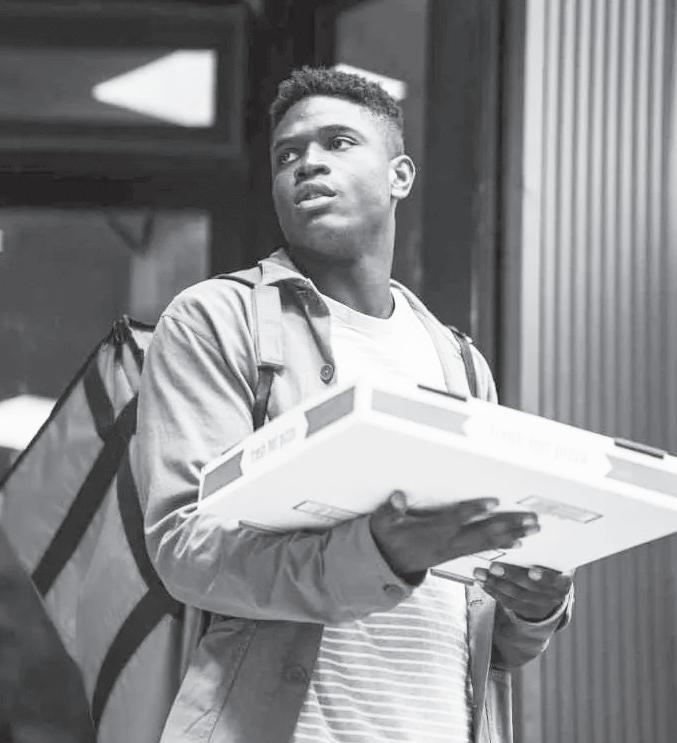
worsen. Nearly one-third, 32%, reported working at least 20 hours per week on their side hustle, effectively holding down a second job.
“Sure, many people have side hustling in their blood. They’re working these side gigs because they’re passionate about them, not just because of the money,” Schultz contended. “That’s not most people, though. Our survey





Anita Alexander
Torrion Amie
Holly Andersen
Nancy L. Beals
Jonathan Beck
Clara Boykin & Family
Gretchen Bratvold
Amanda Brinkman
Toweya Brown-Ochs
Benjamin F. Bryant
& Dr. Antusa S. Bryant
Deanna Callender
Shirlee L. Callender
Karl Cambronne
Liam Cavin
Janis Clay
Edward Coblentz
Coventry Cowens
Alvin E. Cunningham
Michael Davis
Victoria Davis
Marie Denholm
Michael Diehl
April A. Estes
George Ewing
Elizabeth Fealey
David Fettig
Readus Fletcher
Ken Foxworth
Michael Franks
Lee Friedman
Ella Gates-Mahmoud
Kimerlie Geraci
Erick Goodlow
Leota Goodney
Karlene Green
Pamela Hall-Clemens
Charles Hallman
Jeana Hamm
Hendon Group, Inc
Thomas Hill
Maxine & Kieran
Hughes
Ellen Guettler & Ben Pofahl
Colnese Hendon
Connie Hudson
Angelo Hughes
Andrew Issacson
Katie Izzo
Ms. Jewelean Jackson
& Sir Steven C. Davis
Nina Johnson
Clarence Jones
Debra Jones
Shirley R. Jones
Julie July
Cynthia Kelly & Murry Kelly Jr.
Nathaniel Khaliq
Zena Kocher
Jimmy Lewis
Lisa Lissimore
Michele Livingston
Harlan Luxenberg
MRPP and Associate Communications
Melanie Manaen
Rose McGee
Peter McLaughlin
Jeffrey McVay
Kyle Meerkins
Deborah Montgomery
Debbie Morrison
Marcia Murray
Mary K. Murray Boyd

Dan Ness
Sanda Noy
Amethyst O’Connell
The O’Neill Family
Minister Dr. Ni Ora Hokes
Liz Oppenheimer & Jeanne Burns
Tamara Pollard
Ray Seville Productions
Mary Quinn McCallum
Dr. Mitchell Palmer
McDonald
Heidi Pemberton
Amy Pfankuch
Patty Ploetz
Catherine Pruszynski
Mark Ritchie
Lyn Rabinovitch & John Saxhaug
Augustus Ritemon
Carolyn Roberson
Winthrop & Barbara Rockwell
M. Rebecca Ross
St. Paul Saints
Anura Si-Asar
Floyd Smaller
Ronald Spika
Stan Sandiford
Cyriaque Sukam
Timothy Sullivan
Heidi Swank
Gregory Tillman
Dotty Timmons
Nicholas Upton
Jason Walker
Dr. Betty Webb
Bill Wells
Tracy Wesley Jeffery Young
Chanda Smith Baker South Hill Film
By Aria Binns-Zager Staff Writer
Art is not just something we observe, it’s something we live with. The Dean Collection, curated by Swizz Beatz (Kasseem Dean) and Alicia Keys, is a testament to the power of living with art in all its forms.
The collection goes beyond visual art, intertwining music, history, and cultural expression. Visitors stepping into the exhibition are immediately immersed in a dialogue between past and present, tradition and innovation, representation and introspection.
The Dean Collection is not confined to traditional visual arts. It also incorporates music, movement, and personal artifacts like early musical instruments from Swizz Beatz, a piano Alicia Keys used in her music videos, and even BMX bikes. These objects emphasize that art exudes beyond paintings and sculptures; it extends to how people express themselves in their daily lives.

One of the most striking pieces in the collection is a monumental diptych (a picture such as an altarpiece or carving in two panels side by side) by artist Amy Sherald, best known for her portrait of First Lady Michelle Obama. The work features motorbike riders, inspired by Sherald’s observations of young men in Baltimore performing stunts on the streets. Their aerial poses, reminiscent of 17th and 18th-century grand manner equestrian portraiture, evoke images of Napoleon on a rearing horse — except in this case, Napoleon wears Air Jordans. Another powerful installation comes from artist Ebony G. Patterson. Her tapestry-like works, created from photographs of children, are printed onto fabric and then hand embellished. Initially, viewers are captivated by the vibrant colors and intricate details, but upon closer inspection, gaps in the fabric and solemn expres-
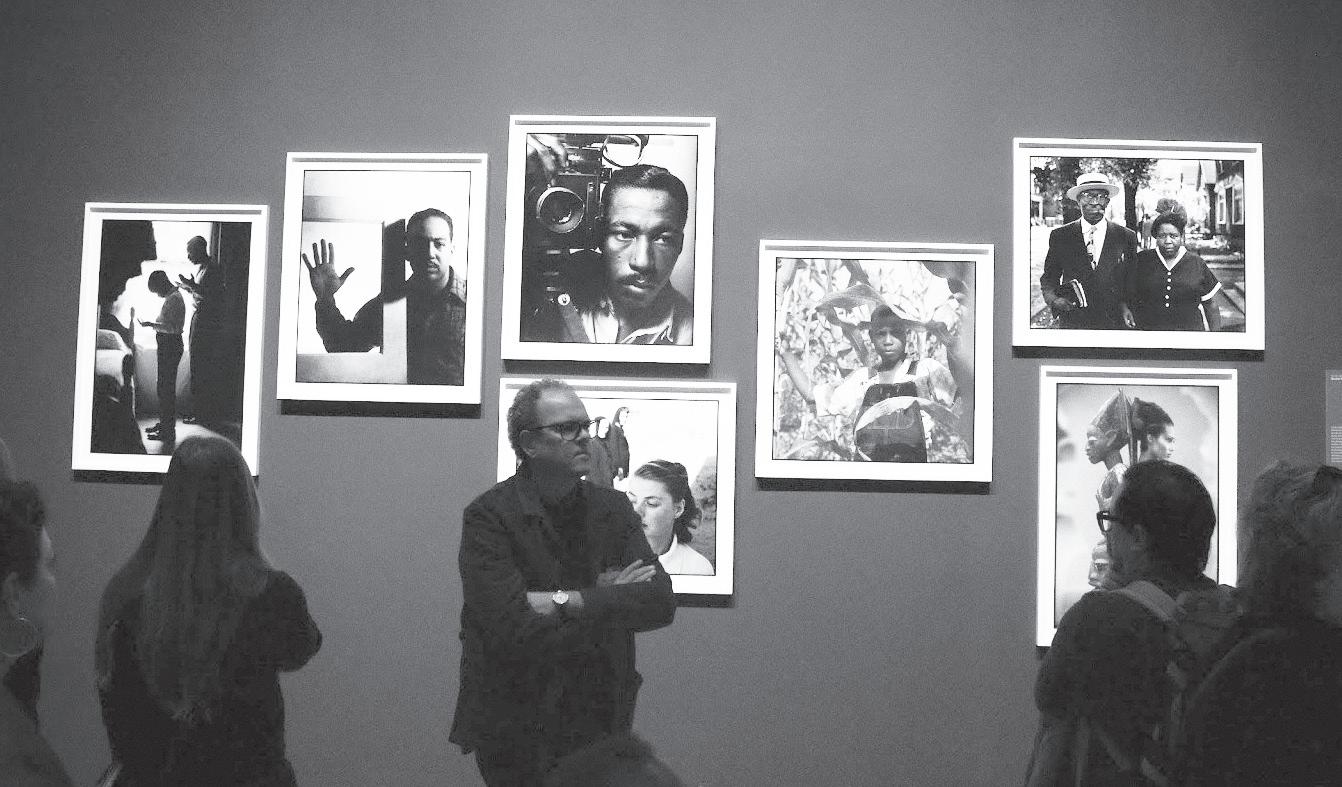
sions hint at a deeper message. Patterson’s work prompts reflection on children lost to gun violence, a reality she contemplates from her experiences growing up in Jamaica and living in Chicago.
“The
exhibition
is organized under the
theme
“Giant Presence,” emphasizing large-scale works that demand attention.”
The exhibition is organized under the theme “Giant Presence,” emphasizing large-scale works that demand attention. Swizz Beatz often says, “The sky is not the limit, it’s just the view,” encapsulating the philosophy behind the collection. The monumental size of many pieces ensures that Black artists are not only seen but take


Sunrise

Jasmine Renae Evans-Nash was born on December 15, 1994, to parents Ewell Nash and Vickie Evans-Nash in St. Louis Park, Minnesota. Jasmine means “gift from God,” or flower. Her older sibling Jay named her after Princess Jasmine in Aladdin.
Jasmine always loved dancing. She danced at Church of New Life with the Starlight Steppers, African dance with Universal Dance Destiny, and was captain of her cheerleading team the St. Louis Park Parkettes. She also liked caring for and styling natural hair using natural hair care products. She dreamed of converting a bus into a mobile hair salon, doing hair and makeup for special occasions.
Jasmine worked in the St. Louis Park community starting with McDonald’s from the age of 16, and The Little Gym, where she taught children gymnastics. She worked as a dietary aide at Methodist Hospital where she was born and her mother worked, and at Bunny’s Bar and Grill where her father
up space in a historically exclusive art world.
A compelling example is Nick Cave’s “Soundsuits,” which are wearable sculptures created in response to the police beating of Rodney King. These elaborate, otherworldly suits, made from a variety of materials, act as protective armor while also serving as a bold artistic statement on race and identity. The Soundsuits function as both a shield and a spectacle, drawing viewers in while challenging them to think critically about systemic
violence and resilience.
Another highlight is Titus Kaphar’s interactive triptych (three panels side by side), a newer addition to the Dean Collection. Kaphar, known for reimagining historical narratives, presents a piece where a canvas of the Virgin Mary can be lifted and repositioned over other panels, including an image of Muhammad Ali knocking out Sonny Liston.
The artwork forces viewers to consider which moments in history are emphasized and which are erased.
While many works critique society and its injustices, the collection also celebrates Black joy, leisure and community.
One section features a quartet of images by Derrick Adams, including pieces from his “Floater” series, which depict Black people relaxing in swimming pools.
This setting holds historical significance, as public pools were spaces of segregation and racial exclusion. Adams reclaims these as spaces of pleasure, relaxation and dignity.
Hank Willis Thomas contributes to the conversation with two pieces: a tapestry created from decommissioned prison uniforms, and a sculpture titled “Strike” depicting two interlocked arms — one of a police officer and one of
another individual locked in a moment of struggle or resolution. These works address themes of incarceration, labor exploitation, and systemic oppression, prompting questions about who is seen, who is forgotten, and who bears the weight of history.
The Dean Collection can be considered an evolving testament to artistic freedom and cultural preservation. Swizz Beatz and Alicia Keys are not just collectors; they are patrons who empower artists to dream beyond their own expectations. By providing opportunities for large-scale works and ensuring their visibility, the Deans are reshaping the contemporary art world, making space for diverse narratives and voices.
As visitors leave the exhibition, they are left with a lingering sense of awe. The works in the Dean Collection do more than just fill gallery walls; they fill a cultural void, pushing conversations forward and elevating the presence of Black artists in the global art scene. And as Swizz Beatz reminds us, “The sky is not the limit — it’s just the view.”
Aria Binns-Zager welcomes reader responses to abinns@ spokesman-recorder.com.

worked and took her and Jay to breakfast as children. She cared for children with her family in their home daycare, teaching dance, yoga, gymnastics, and so many other things.
Jasmine was always focused on health and fitness. She had returned to school at Minneapolis Community and Technical College to be a health and fitness teacher. She wanted to work at St. Louis Park High School where she graduated.
Jasmine’s physical presence left the earth on March 2, 2025. Left to mourn her passing are her sons Levi Kristopher Patterson-Nash and Joseph James Patterson-Nash; their father, Steffan Scott Patterson; her cousin (whom she called her third son) Rafiq Zareef Muhaymin; her parents, Ewell Nash and Vickie Evans-Nash; her grandmother, Claudean Whitley; her brothers, Ewell Dennis Nash and Jay Allan Evans-Nash; her nieces Deneisha Bergquist and Zahkyah Sims; her grand-niece Talia Sims; and a host of aunts, uncles, cousins and friends. Those weary over the loss of Jasmine should rest assured that her spirit rests in the arms of her ancestors, Grandmother Mary Earl Evans, Great Uncle Johnnie Merle Day, Uncle Joseph Ray Evans, and Uncle Jerry Leon Fisher Evans.
Anyone who knew Jasmine knew she was a flower, a gift from God. Her beautiful smile and caring spirit will bloom forever in the hearts and memories of those who knew her, including her cherished sons.
Homegoing services for Jasmine will be held on Saturday, March 22, at Estes Funeral Chapel, 2201 Plymouth Ave. No., Minneapolis, MN, 55411. Visitation will be held at 11 am, with services at noon. Repast will follow from 1:30-3:30 pm at Proverb Christian Fellowship, 3210 Oliver Ave. No., Minneapolis, MN 55412.
Spokesman-Recorder March 20, 2025
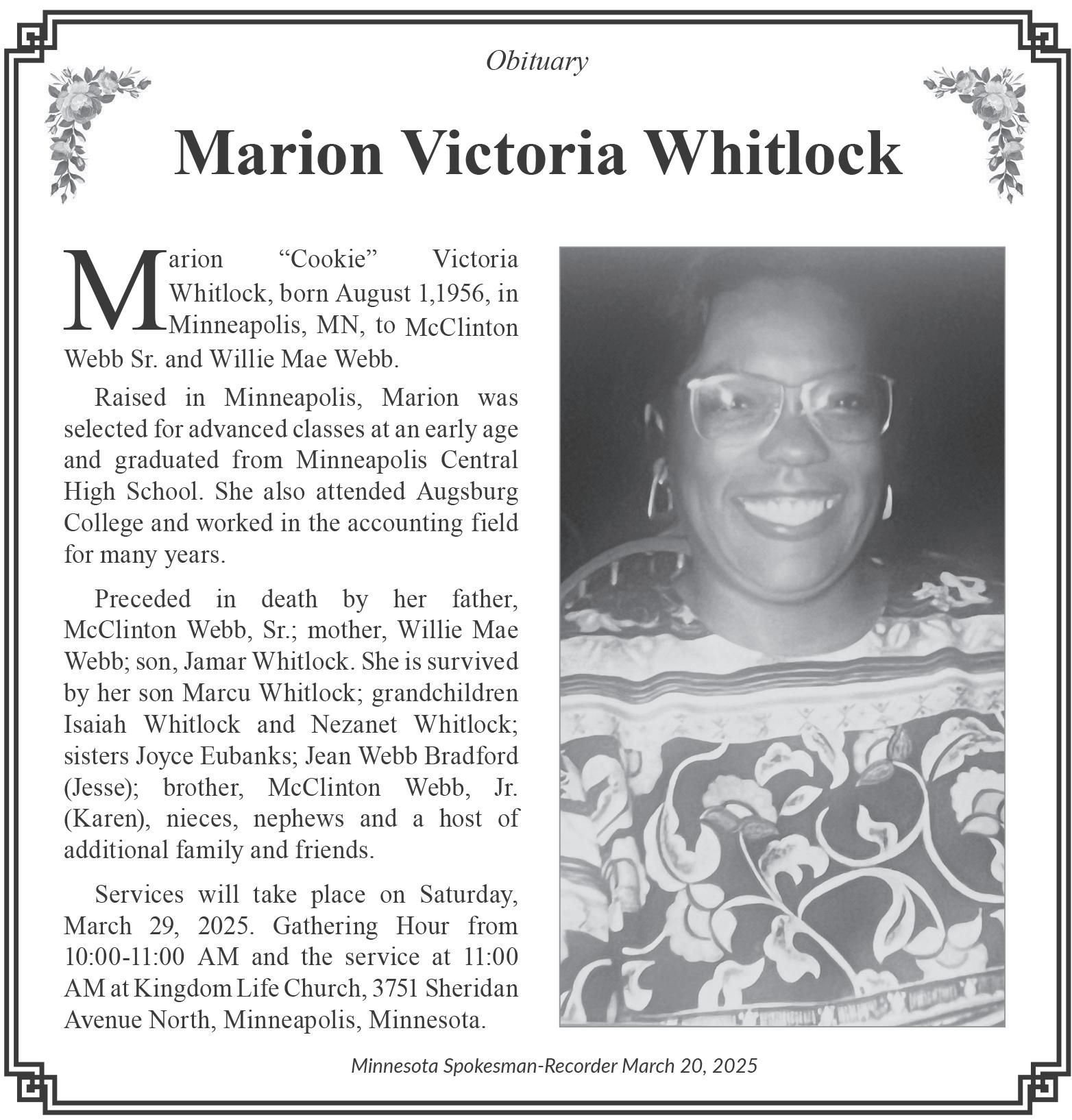


By Clint Combs Staff Writer
Shay Cosey is so broke working at a child care center that she can’t even afford to send her son to her own workplace. At a press conference held March 3 at the Wilder Child Development Center, Cosey spoke out about the financial strain she faces.
“I am not paid enough [as a child care worker] to put my own child in child care,” Cosey said. “Let me say that again: I am not paid enough to afford to put my own child in child care.” The cost of child care has soared to rival college tuition and mortgage payments.
Britta Thielen, a fundraiser in higher education, pays $2,000 a month for her son to attend a day care center that accommodates her schedule.
One of the key benefits of early child care for Thielen is the opportunity it gives her son to socialize with other children.
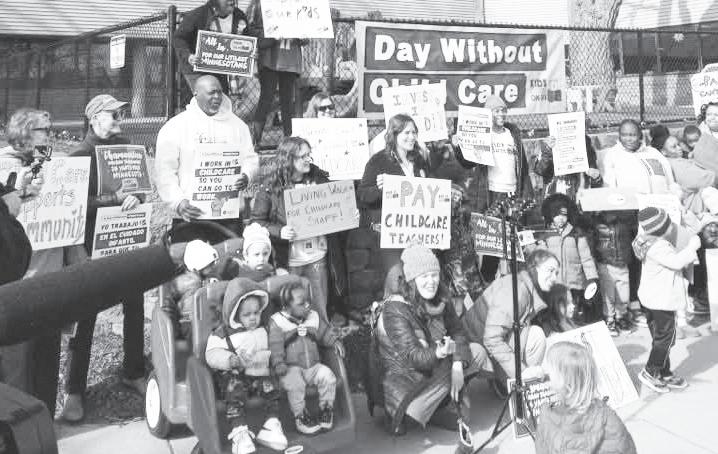
Child
care more affordable by capping costs at 7% of a family’s income. The program would also provide sustainable funding for providers and ensure child care teachers earn a living wage.
Sen. Liz Boldon (D-Rochester) expressed concern over the rising costs of child care. “That’s not sustainable,” Boldon said.
Sen. Grant Hauschild shared a personal story during the press conference. While grocery shopping, he was surprised to hear a voice call his son’s name. “Henry, Henry, Henry,” he heard, only to find that the child care teacher caring for his child was also working a third job at Target to make ends meet. “Meanwhile, I’m strolling the aisles at Target, and the teacher helping to raise my child is telling me she has to work at Target to afford her life,” Hauschild said.
Package,” which aims to ensure that no family in Minnesota spends more than 7% of their income on child care. “It’s a costly bill, but it will make a huge difference for families,” Hauschild said.
Hauschild also advocated for universal child care, comparing it to the way K-12 education is provided publicly.
“Zero to five years old is the most critical developmental stage for children,” he said.
“There’s no reason why we shouldn’t treat child care like we do K-12 education. This will benefit the workforce and the economy.”
“He’s learning his letters, numbers, and even the days of the week,” Thielen said. “The center gives him the skills to get ready for school, as well as a nurturing environment for his emotional and social growth.”
meets the income requirements for child care assistance.
Now, she’s on the defensive as the Trump Administration has proposed massive cuts to child care centers nationwide.
of these workers are mothers and fathers who need a safe, quality child care environment for their own children, which is why we’re here today.”
Hauschild emphasized the need for continued funding for programs like the Child Care Assistance Program (CCAP) and Early Childhood Scholarships. He and Sen. Boldon are co-sponsoring a new bill called the “Great Start Affordability
Lt. Gov. Peggy Flanigan shared a personal story about her family’s reliance on public programs like SNAP and medical assistance, including the Child Care Assistance Program. “These programs allowed my mom to go back to school and earn her certificate in phlebotomy, which helped lift our family into the middle class,” Flanigan said.
LeAndra Estis, a St. Paul resident, sacrificed her credit score racking up bills just to have receipts proving that she


Obituary
“The federal funding freeze that the Trump administration has proposed is seriously threatening the funding for child care assistance in Minnesota,” Estis said. “If that funding disappears, child care, as we know it, will disappear.”
Monique Stumon, director of the School Readiness Learning Academy on the North Side, also addressed the racial disparities in child care. “So often, our little Black and brown babies are not getting the resources they need to start school,” she said. “The industry needs workers, right? Many

Sunrise March 23, 1931 — Sunset February 25, 2025.
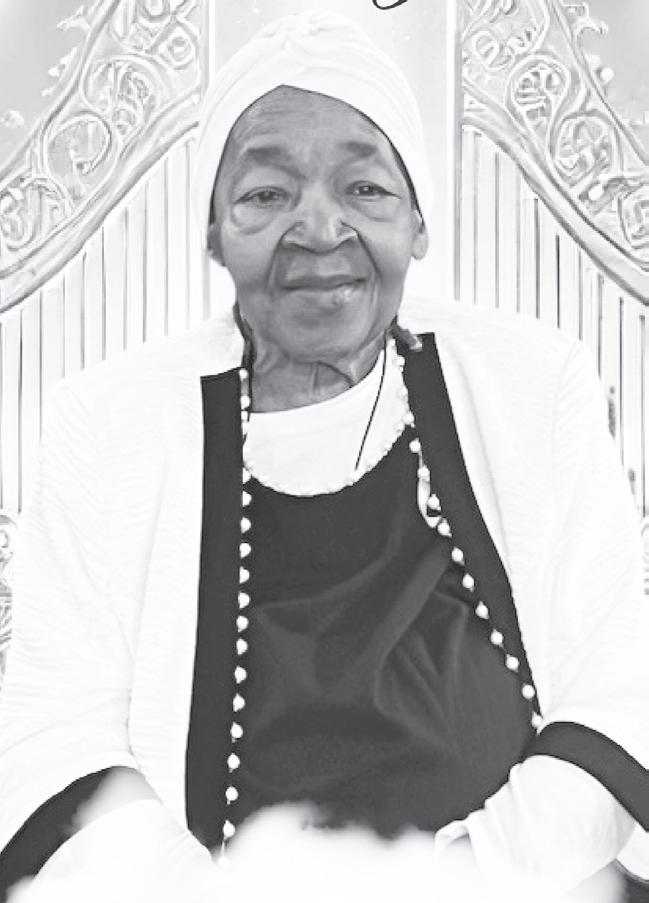
Pastor Betty Louise Samuels, resident of Minneapolis, Minnesota, transitioned peacefully into glory at the age of 93 on February 25, 2025. Pastor Betty devoted her life to serving God and her community and was the beloved Pastor of Miracle Mission Deliverance Center for over 40 years. She was a beacon of light that showed faith, hope, and love to all who she encountered.
Betty Louise (Alcox) Samuels was born on March 23, 1931, in Humboldt, Kansas, to (mother) Elzora Scott and (father) LeRoy Alcox. Pastor Betty gave her life to Christ at the age of nine. She attended Cleveland Elementary School and Field Kindley Memorial High School in Coffeyville, KS, before relocating to Minneapolis in the 1950s, where she received the baptism of the Holy Spirit and fully answered her divine calling. In Minneapolis, Betty met and married the love of her life, Fredrick Henry Samuels. They were blessed with seven children. Pastor Betty later earned an Associates Degree in Business Administration from the University of Minnesota. She worked at US Bank and Northwestern Bell Telephone Company before heeding to the voice of the Lord. Pastor Betty made the decision
to leave her job to dedicate her life entirely to ministry.
With a heart for the people, Pastor Betty founded Miracle Mission Deliverance Center in the Sumner Olson Projects. Later she moved to Emerson & West Broadway Avenue in North Minneapolis, MN. She was known for her compassion, and was often seen driving her station wagon or van around town – delivering food to those in need. Long before food pantries were common, she ran one from her church basement, ensuring no one in her community went hungry. Her unwavering generosity and open arms made every new member feel like family.
As a mighty woman of God, Pastor Betty’s anointed hands brought forth miracles, and her passionate preaching stirred souls. Though small in stature, she was bold in the Spirit, ministering fearlessly to those seeking salvation. Even after retiring from her church building, she continued holding services from her home and later at Fairview Park Recreation Center in North Minneapolis.
Pastor Betty is survived by her loving children: Richard Samuels, Anthony “Tony” Samuels, William “Bill” Samuels, Raymond “Ray Seville” Samuels, Catherine Samuels, and host of grandchildren, great grandchildren, family, and friends.
She was preceded in death by her late devoted husband, Fredrick Henry Samuels Sr., her children Fredrick “Lasalle” Samuels and Bonnie Henry, grandchildren Fredrick “Freddie” Samuels III and Regina Samuels, as well as her siblings Mary, Dorothy, Melba, LeRoy, James, Ilene, and brother-inlaw Calvin.
Pastor Betty Samuels was a faithful servant, a warrior in the Spirit, and a mother to many. Her prayers covered us, her wisdom guided us, and her love will forever remain in our hearts. Though she has departed from this earth, her legacy of faith, service, and selflessness will live on through the countless lives she touched.
Well done, thou good and faithful servant. The angels rejoiced as they welcomed you HOME.
“There’s no reason why we shouldn’t treat child care like we do K-12 education.”
Data from Minnesota’s wage statistics reveals that Black or African American workers make up 13% of the workforce in child care. Child care is one of the most underpaid jobs, rivalling restaurant cooks in the race to the lowest wages. In 2023, 620 child care jobs went unfilled. Legislators are pushing for solutions to Minnesota’s child care crisis. The Great Start Scholarship, a proposed legislative program, aims to make child
496 Words 9” high
VIEW Continued from page 12
culture is for me. And the basketball is good, too.” Norfolk State senior forward Kierra Wheeler (Minneapolis) won the MEAC Tournament Outstanding Player award after her team’s 68-56 win over Howard in the title game. “We are reaping our rewards for all the hard work we put in,” she told the MSR and other reporters after the game.
Finally … In the wake of last week’s firing of Ben Johnson as Gopher HC, we talked to Black coaches where all the MEAC
The press conference highlighted the urgent need for increased investment in affordable, high-quality child care — a cause that has become a major focus for legislators and advocates in Minnesota.
Clint Combs welcomes reader responses to ccombs@spokesman-recorder.com.
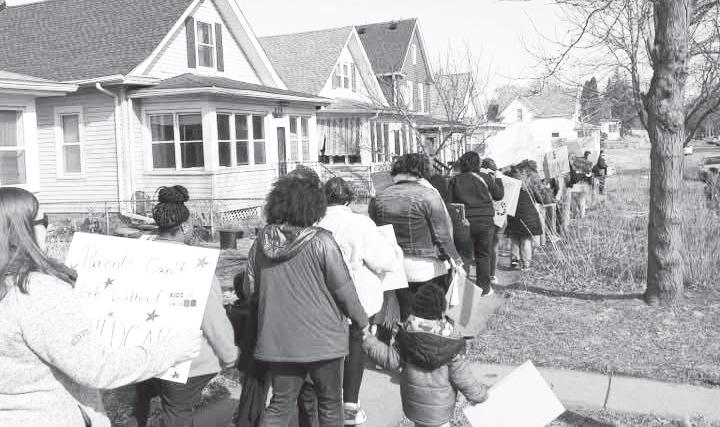

Kierra Wheeler with her Outstanding Player award
coaches are Black.
“I hate to see our Black coaches [fired] because there are so few of us,” said Morgan State Coach Kevin Broadus. His team played Minnesota during the recent non-conference sea-
son at Williams Arena. “Forget coaching,” he continued of Johnson. “He’s a better person. He’s a good man that someone should hire.”
Howard’s Kevin Blakeney added, “My thoughts go out to him and his family and his staff. It seems to me that Johnson is a hell of a coach and a really good person.
“I’m pretty sure if [Minnesota] had a more competitive NIL package, he would have been more successful and still have a shot,” Blakney concluded of Johnson, who coached Minnesota for four seasons.
Charles Hallman welcomes reader comments to challman@ spokesman-recorder.com.


By Dylan Sullivan and Jason Hickel
During the 1980s and 1990s, the International Monetary Fund (IMF) and World Bank forced governments across Africa to implement neoliberal structural adjustment programs (SAPs). SAPs compelled post-colonial governments to cut public services and public-sector production, remove labour market regulations and wage protections, privatize sovereign assets, and eliminate protectionist measures and industrial policy aimed at achieving sovereign industrial development. These reforms dismantled the progressive policies that were then being pursued by African nationalists and socialists, who were seeking to build their industrial base and improve living standards following the catastrophe of European colonialism. Many African leaders and scholars— including Thomas Sankara and Samir Amin — emphasized that SAPs worked to re-impose the imperial relationship, by asserting Western control over national economic policy, cheapening African resources, and organizing production around exports within global commodity chains.
It is well-known that SAPs had a devastating impact on the peoples of Africa. Between 1980 and 1994, Africa’s per capita GDP declined from around $4,500 to below $4,200 U.S. (2023 PPP). In-
comes did not recover until 2001. In other words, SAPs imposed a recession that lasted for over two decades.
Studies show that SAPs were associated with elevated child and maternal mortality rates, higher levels of poverty, and a deterioration in human development outcomes. In some cases, the crisis was so severe that it triggered a reduction in people’s physical stature, a sign of extreme nutritional stress and a breakdown in public health. For instance, people born in Tanzania in the 1980s were around a centimetre shorter than people born a decade — or even a century — earlier.
ests, fisheries, etc.
DE declined by over 10% during the 1980s and 1990s, under structural adjustment. This strongly suggests that SAPs induced a recession, or decline in physical production, which is consistent with data showing declining GDP per capita during that period.
Crucially, however, Africa’s ‘material footprint’ (MF) per capita declined by substantially more than domestic extraction. MF refers to the total quantity of raw materials consumed in Africa, including those embodied in imported goods and excluding those embodied in exported goods. African consumption declined
It is well-known that structural adjustment programs had a devastating impact on the peoples of Africa.
Recent data on Africa’s material resource use — i.e., the total quantity of material stuff (in tons) used by African economies — provides new insights into how this crisis played out. ‘Domestic extraction’ (DE) per capita refers to the total quantity of raw materials extracted from the environment in Africa — in other words, all the biomass, metals, minerals, construction materials, and fossil fuels produced by Africa’s mines, farms, for-

by 20% from 1980 through the 1990s, and only recovered to its previous levels in 2013.
The decline in African consumption was more severe than the decline in production.
Of course, a decline in material use can sometimes result from efficiency improvements, but this normally only occurs in developed economies with strong technological endowment, and is accompanied by rising GDP. This is not what occurred in Africa, where GDP declined at the same time. Indeed, African countries were not operating at the technological frontier where such efficiency improvements generally occur — a problem which was exacerbated by SAPs that slashed public investment in technological development.
After 1980, Africans were producing less, but they were consuming even less than they produced. Where did the missing output go? It was exported to the rest of the world, and without an equivalent material return.
This is a portion of “Plundering Africa;” to read the full story, visit www.roape.net.
By George S. Schuyler
By a peculiar logical inversion the Anglo-Saxon ruling class, its imitators, accomplices and victims, have come to believe in a Negro problem. With great zeal and industry those controlling the media of information and instruction have succeeded in indoctrinating the whole world with this fiction.
It is written into the laws, accepted by organized religion; it permeates our literature, distorts our thinking, and is deeply embedded in our customs and institutions. So successful has been this propaganda that even its unfortunate victims often speak of it with the same conviction with which many people talk of guardian angels, ghosts and malignant spirits.
It is the “stop, thief” technique at its best — a great testimonial to the ingenuity of exploiters with a bad conscience; for while there is actually no Negro problem, there is definitely a Caucasian problem.
Continual reference to a Negro problem assumes that some profound difficulty has been or is being created for the human race by the so-called Negroes. This is typical ruling class arrogance, and, like most of the faiths circulating in our civilization, has no basis in fact. It has been centuries since any Negro nation has menaced the rest of humanity.
The last of the Moors withdrew from Europe in 1492. Since that time not one of the numerous industrially retarded
but socially complex African states has molested the rest of the world with the possible exception of pirates of the Barbary Coast. They have neither possessed the means nor the inclination to do so, and they lived more or less happily in isolation until the coming of the European with his Bibles and bullets.
tory of the world since 1815 is crowded with references to wars, campaigns and expeditions by Caucasian powers against almost every African and Asiatic nation.
Of the international capitalists who control the lives of over a billion colored people, practically all are white, and so, also, are the technicians,
The history of the world since 1815 is crowded with references to wars, campaigns and expeditions by Caucasian powers against almost every African and Asiatic nation.
The so-called Negroes did not inaugurate the trans-Atlantic slave traffic, although some profited from it. They have not invaded anybody’s territory for almost a millennium. They have passed few if any Jim Crow laws, established no Jim Crow customs, set up few white ghettos, carried on no discriminatory practices against whites and have not devoted centuries to propaganda attempting to prove the superiority of Blacks over whites.
The last Negro writing with that slant was in the Tenth Century. We seek in vain during modern times for any record of Negroes having destroyed any white cultures, having ravished and debauched white women wholesale, or having stolen white manhood.
On the other hand the his-
brokers, lawyers, generals, admirals, artists and writers who serve them. Colored people are largely excluded from this select group and relegated to the economic fringes of society where labor is long and hard and pay is short and seldom.
The occasional exception here and there only emphasizes the point. The only sense in which there is or has been a Negro problem is in the colored folk’s natural human aversion and opposition to conquest, enslavement, exploitation and debasement during the long and bloody period of Caucasian military ascendency.
This is a portion of George S. Schuyler’s “The Caucasian Problem”; to read the full essay, visit blackagendareport.com.
By Colonel Jeffrey D. Glover and Dr. Benjamin F. Chavis, Jr.
The new FDA-approved weight loss medicines have changed the game for people with obesity, offering millions of Americans a chance to transform their health, prevent disease, and live longer lives.
But as demand for these treatments soars, an illegal industry is growing alongside it.
Criminal networks, counterfeiters, and rogue compounding pharmacies are taking advantage of patients’ needs, flooding the market with fake, unsafe and untested knockoffs.
In December 2023, the FDA seized thousands of counterfeit injection pens within the U.S. drug supply chain.
A Tennessee woman’s home was raided by police, where officers found more than 300 vials of counterfeit weight loss drugs — semaglutide and tripeptide — that she had been supplying to med spa clinics.
After testing, one of the vials was found to contain nothing but water. This is the reality of an unregulated black market. People think they are injecting medicine into their bodies that will improve their health, but they could be injecting poison —or nothing at all.


For counterfeiters and other profiteers, the market is ripe for exploitation — high patient demand and a rising obesity epidemic create the perfect conditions for their illegal trade to thrive. The result? A knockoff weight-loss drug market populated with med spas, on-
line “telehealth” sellers, and unauthorized compounding pharmacies pushing dangerous counterfeit or untested compounded medications.
The Black community is especially vulnerable given its higher prevalence of obesity.
In 2023, non-Hispanic Black or African American adults were 30% more likely to be obese than non-Hispanic white adults, with 43% of nonHispanic Black adults over the age of 18 classified as obese.
As the executive director of the National Organization of Black Law Enforcement Executives (NOBLE), I oversee an organization whose mission is to protect our communities from harm. Law enforcement officers are already seeing the rise of counterfeit weight loss drugs spread through our communities.
drugs, thereby significantly increasing access to these innovative medicines.
Unlike other chronic diseases, obesity treatments have been excluded from Medicare coverage. The result has been limited access to authentic medicines, creating a high demand for knock-off versions. While law enforcement must do its part to rein in bad actors, the new administration can help by finalizing the CMS proposed rule.
Providing greater access to safe and effective medicines would go a long way to putting illicit suppliers on notice and out of business.
Just as with illicit street drugs, enforcing the law is critical to get these dangerous products off the market. But equally critical is to stem consumer demand.
The Trump administration has an opportunity to help curb this rising demand. Currently, there is a proposed rule at the Centers for Medicaid and Medicare (CMS) that would provide coverage for FDA-approved weight loss
Providing greater access to safe and effective medicines would go a long way to putting illicit suppliers on notice and out of business. No one should be exposed to the risks that come with untested, unregulated injectable medicines, and I am confident President Trump will make the right decisions to protect American public health.
Colonel Jeffrey D. Glover is president of the National Organization of Black Law Enforcement Executives (NOBLE). His email address is President@noblenatl.net.
From Ads Department/MN Spokesman-Recorder
In Re: Estate of
Margaret Rees Schorsch, FILE NO. 27-PA-PR-25-224
Deceased
TO ALL INTERESTED PERSONS AND CREDITORS:
Notice is hereby given, that an application for informal probate of the above named decedent’s last will dated October 23, 1989 and codicil dated May 2, 2000 have been filed with the Registrar herein, and the application has been granted informally probating such will. Any objections may be filed in the above, and the same will be heard by the Court upon notice of hearing fixed for such purpose.
Notice is hereby further given that informal appointment of Joanne Rees Vance, whose address is 8317 W 103rd St, Bloomington, MN 55438, as personal representative of the estate of the above-named decedent, has been made. Any heir, devisee or other interested person may be entitled to appointment as personal representative or may object to the appointment of the personal representative and the personal representative are empowered to fully administer the estate including, after 30 days from the date of issuance of letters, the power to sell, encumber, lease or distribute real estate, unless objections thereto are filed with the Court (pursuant to Section 524.3607) and the Court otherwise orders.
Notice is further given that ALL CREDITORS having claims against said estate are required to present the same to said personal representative or to the Probate Court Administrator within four months after the date of this notice or said claims will be barred. Dated:
STATE OF MINNESOTA FOURTH JUDICIAL
COUNTY OF HENNEPIN DISTRICT COURT PROBATE DIVISION Court File No.: 27-PR-25-169
In Re: Estate of
Douglas G. Tigges, Decedent
612-827-4021
BILLING INQUIRIES & TEARSHEETS
PLEASE CONTACT ACCOUNTING DEPT BILLING@SPOKESMAN-RECORDER.COM
PROBATE 2 WEEK RUN FLAT RATE $215.00 PREPAID
Please Note: New email address for all future ads is ads@spokesman-recorder.com
The MSR handles billing digitally. This means you will get e-tears and e-mailed invoices unless you specifically request a hard copy.
Please proof, respond with email confirmation to ads@spokesman-recorder.com
The MSR handles billing digitally. This means you will get e-tears and e-mailed invoices unless you specifically request a hard copy.
Send resumes to Jessica Westendorp at 3019 Minnehaha Ave, Minneapolis, MN 55406 or via email at jwestendorp@wilsonlg.com. Minnesota Spokesman-Recorder March 13, 20, 2025
NOTICE OF INFORMAL APPOINTMENT OF PERSONAL REPRESENTATIVE AND NOTICE TO CREDITORS (INTESTATE)
Notice is given that an Application for Informal Appointment of Personal Representative was filed with the Registrar. No Will has been presented for probate. The Registrar accepted the application and appointed Michael Tigges, whose address is 421 South Clark St., Apt. 104, Carroll, IA 51401, to serve as the personal representative of the Decedent’s estate.
Any heir or other interested person may be entitled to appointment as personal representative or may object to the appointment of the personal representative. Any objection to the appointment of the personal representative must be filed with the Court, and any properly filed objection will be heard by the Court after notice is provided to interested persons of the date of hearing on the objection.
Unless objections are filed, and unless the Court orders otherwise, the personal representative has the full power to administer the estate, including, after thirty (30) days from the issuance of letters of general administration, the power to sell, encumber, lease, or distribute any interest in real estate owned by the Decedent.
Notice is further given that, subject to Minn. Stat. § 524.3-801, all creditors having claims against the Decedent’s estate are required to present the claims to the personal representative or to the Court within four (4) months after the date of this notice or the claims will be barred.
Dated: March 12, 2025 Yvette M. Andrade Registrar Sara Gonsalves District Court Administrator
Minnesota Spokesman-Recorder
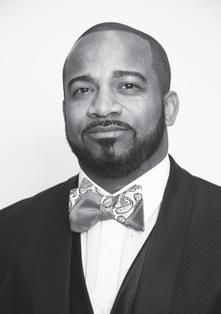
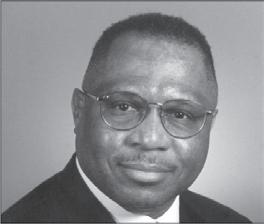
From Ads Department/MN Spokesman-Recorder
Continued from page 12
include Florida Memorial University, where she was associate head coach, and the team won the 2023 Sun Conference championship. She also taught in high school and middle school for a decade, and was a player development coach for WNBA, NBA and FIBA players.
whatever they want to do.’
Changing culture difficult
PHONE: 612-827-4021 FOR BILLING INQUIRIES & TEARSHEETS PLEASE CONTACT ACCOUNTING DEPT BILLING@SPOKESMAN-RECORDER.COM
Rachel Naughton’s coaching experience includes lead and assistant coaching stints in high school and AAU in Delaware, and college (St. Paul (VA) College), and most recently the head women’s basketball coach at Baltimore City (MD) Community College.
PROBATE 2 WEEK RUN FLAT RATE $215.00 PREPAID
“I like a program that I can take over and lead and develop because what I like to do is develop players and bring that spark and that motivation,” stressed Cooper after her first season at UVI came to an end at the HBCUAC tournament (3-16 overall, 3-14 conference).
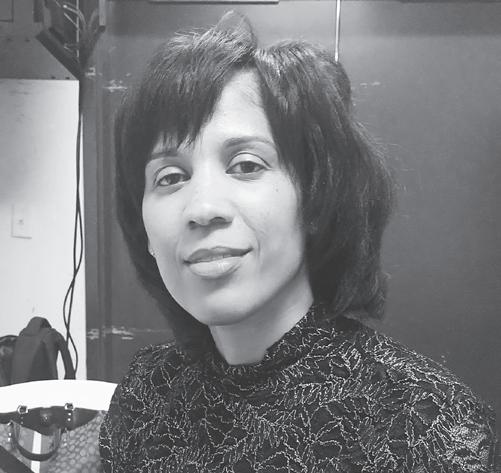
young people and away from their families and their parents, people who have given them support.
“Now they are trying to find their way to trust and navigate through their peers on campus, and a lot of things that could get them in trouble. I think mental health is a huge component that we need to really focus on. It’s not just basketball.”
the head coach, trying not to sound too frustrated. But Naughton quickly pointed out, “The season is over and I am exhausted.”
Please Note: New email address for all future ads is ads@spokesman-recorder.com
The MSR handles billing digitally. This means you will get e-tears and e-mailed invoices unless you specifically request a hard copy.
The four-year Black university “has a very rigorous program academically,” the coach pointed out. “They really do field the value of education.”
Now in the Caribbean, “It was a challenge…to try to change the program around,” said Cooper. “Being there, there are so many obstacles we have to overcome being at that school. But I wouldn’t trade it for anything.” She is determined to “let these young women know that they can do
An HBCU graduate (St. Paul College), Naughton is fully aware of the challenges of coaching at a small school with limited resources, but wanting to provide a similar experience for her players as she received when she was in school is among the goals the first-year Wilberforce (OH) WBB coach.
“I know this season has been a learning experience for me as their head coach,” explained Naughton after the Lady Bulldogs concluded their 2024-25 season 11-16 overall, 6-12 conference. “There were a lot of returning players from last year, and they won one game and another one by forfeit. It is very difficult to change their culture within months.
“Because I have high expectations and I am a competitor, I wanted to do that,” continued
Among the needed resources she hoped to improve for her players is addressing their mental health needs.
“Mental health is a huge challenge for us coaches. They’re
Continued from page 12
leader. “Her energy and her focus, and her forward vision was a game changer for us. We want to support likeminded individuals. It was an easy decision.
“Initially we did two years, and last year we announced
Naughton is ready to get back to work in preparing for her second season at Wilberforce. “I appreciate the effort, and I know what to look for, for next year.”
Charles Hallman welcomes reader comments to challman@ spokesman-recorder.com.
that we extended the contract for three years,” surmised Cooper. “We’re the title sponsor for both men’s and women’s basketball and baseball.
“This is a true partnership without a doubt,” she concluded.
Charles Hallman welcomes reader comments to challman@ spokesman-recorder.com.


ORFOLK, VA. – The NCAA selection committee since 2019 has used the NCAA Evaluation Tool (NET) ratings for determining the teams.
There are 10 criteria used in the decision-making; they include bad losses, common opponents, competitiveness in losses, early performances vs. late performances, head-to-head competition, watching teams in action, overall records, regional rankings, significant wins and strength of schedule.

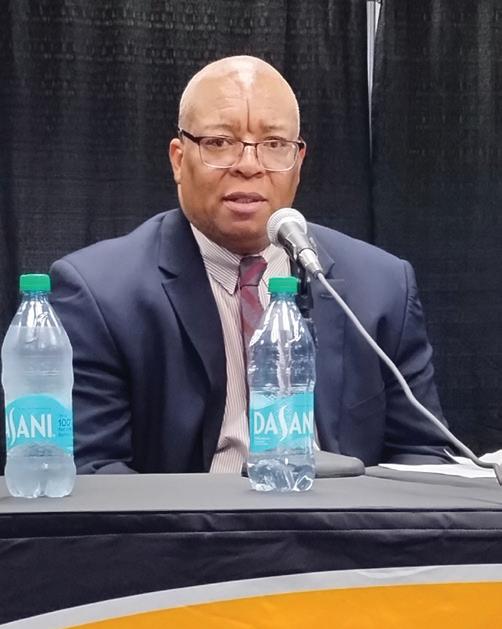
culate who’s the best when the best has shown you in their [winlost] record.”
In a perfect world, both the MEAC and SWAC should have both their tournament champions, and regular season champions should go to the NCAAs, just as do larger non-HBCU leagues that regularly get multiple teams selected.

A familiar face
This columnist wasn’t the only Minnesotan here at the MEAC tournament. “My son Tyler is a Howard alum,” explained awardwinning and HOF music pro-
However, the NET ratings actually don’t change the historical placing of Black college teams, which usually are pitted against top seeds, making it awfully difficult to advance past the first round. At the MEAC tournament last week in Norfolk, Va., during four days and 27 games of men’s and women’s hoops, two champions were crowned last Saturday. We asked several coaches if the NET is fair or unfair to HBCUs.

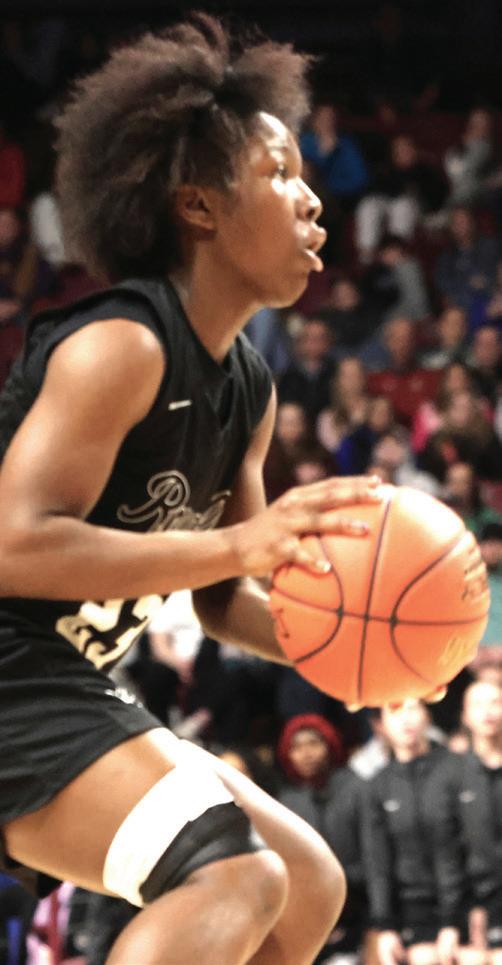
“I don’t know if it’s fair or unfair,” said Howard MBB Coach Kevin
Blakeney. “We do have a tournament that earns your way to getting to the NCAA tournament. We are not the only league that has that issue” of only one team being selected.
Howard WBB Coach Ty Grace added, “I definitely think that having so many things does make it a little complicated. It’s just a lot of [factors] to try to cal-
“You look at Norfolk and Howard. When they get into the league, they lose points from the NET rating,” bemoaned South Carolina State Women’s Coach Tim Eatman. “Instead of us trying to fight for one spot, maybe we could get two spots.”
But only the two Norfolk State teams that won their tournament championships last Saturday will get to go to the NCAAs because they earned the automatic bid. The two MEAC runners-up, South Carolina State
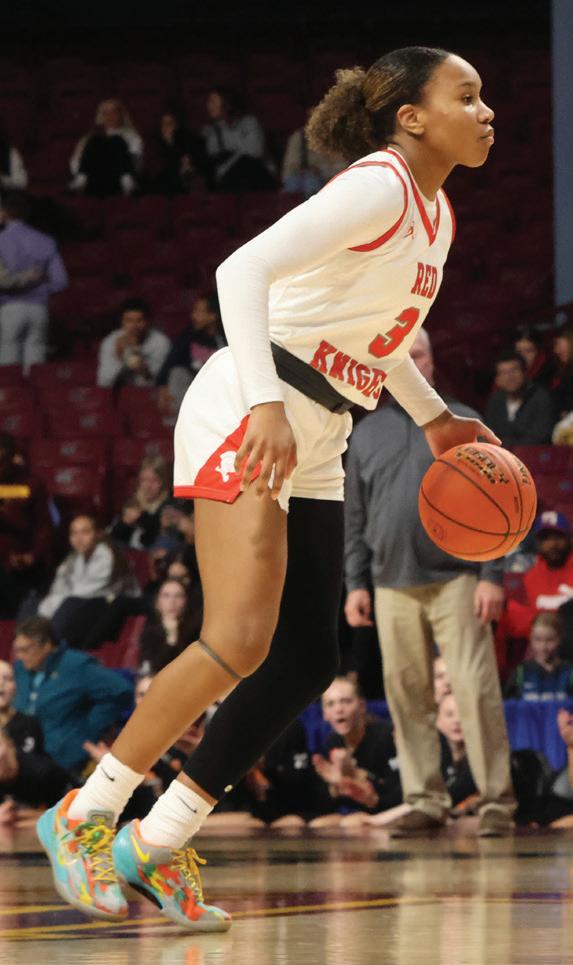
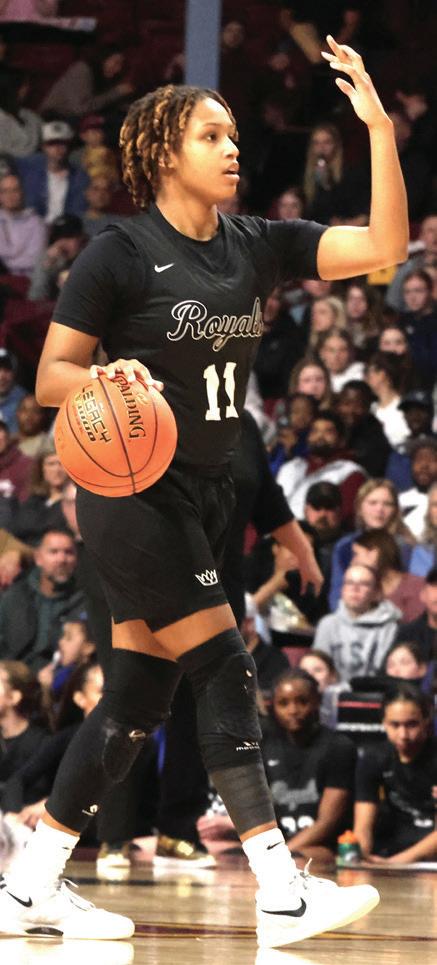
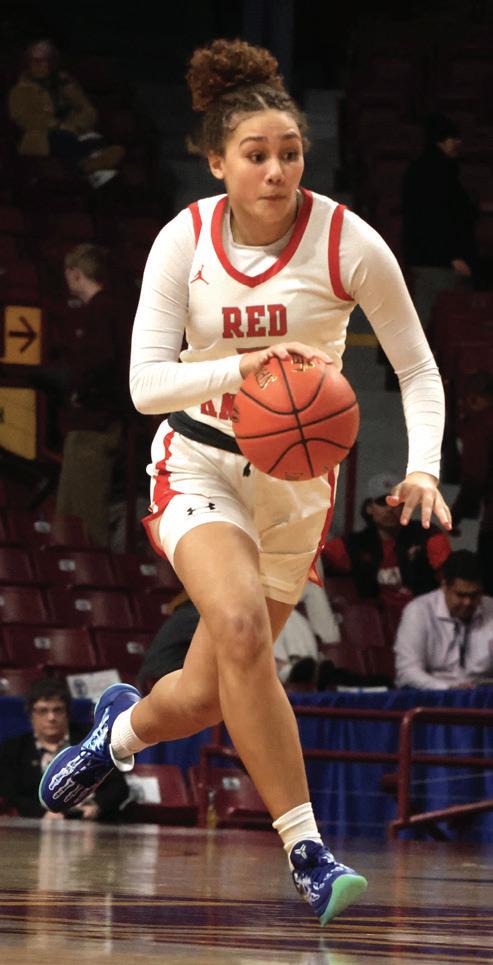
(men’s) and Howard (women’s), played well enough but are not going because they didn’t win the tournament title.
Eatman admitted that the NET “does hurt us” Black schools.
“We have to do a better job strategically planning. Even if we leave open slots [for scheduling games] so we could play a league that [also] is fighting for a 15th or 16th seed.”
When asked why the NCAA makes the selections so complex,
“If you don’t make it complicated,” surmised Eatman, “then a lot of people will lose their jobs.”
ducer Terry Lewis before the Bison-Morgan State quarterfinals game last Thursday. “He played the last two years. He’s one of the coaches helping out.
“Black college tournaments and culture is A-number one for me,” said Lewis. “Just being able to feel the community at large and the friendly competition with all of the parents. Win, lose or draw — we all win,” Lewis pointed out. “It’s a fantastic exhibition of what Blackness and
This occasional series will highlight Black coaches at all levels of sport. This week: Virgin Islands WBB Coach Stephanie Cooper and Wilberforce WBB Coach Rachel Naughton
ted reflectively in separate interviews with the MSR on their just-completed seasons at their schools.
By Charles Hallman Sports Columnist
he understanding of the importance of being financially literate, especially for Black students, is part of the mission of Holly Cooper.
sion that focuses on “intentional and translational policy approach to advocacy” in public policies in regards to such areas as development finance, education and workforce development, and financial inclusion, says its website.
tephanie Cooper and Rachel Naughton completed their respective first years as head coaches at the University of the Virgin Islands (UVI) and Wilberforce (Ohio) University, two HBCU Athletic Conference (HBCUAC) member schools. Both veteran coaches chat-
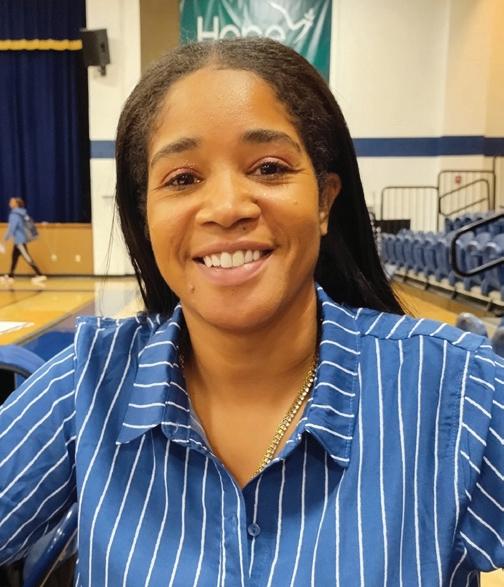
UVI turnaround a challenge The U.S. Virgin Islands comprise almost 134 square miles, primarily consisting of three islands in the Caribbean — St. John, St. Thomas and St. Croix. The University of the Virgin Islands (UVI) is a public Black land-grant university with two campuses on St. Thomas and St. Croix. UVI is the only HBCU Athletic Conference school outside of the U.S. But it wasn’t the nice shady beaches that attracted Stephanie Cooper to St. Thomas, but rather the opportunity to create and sustain a perennial competitive program when she was named the school’s head women’s basketball coach last July.
The Buccaneers haven’t been successful for some time, something Cooper, a 13-yearplus coaching veteran, wants to reverse. Her previous stops
■ See SOE on page 11
Cooper is the senior vice president of marketing and communications at Hope Credit Union, the nation’s largest Black and woman-owned financial institution, with locations in five Southern states: Louisiana, Tennessee, Alabama, Mississippi and Arkansas. These states also have member schools of the HBCU Athletic Conference (HBCUAC), which announced in 2022 that Hope became an official sponsor of the all-Black league in the NAIA.
She has nearly 25 years’ experience in marketing consulting. We met Cooper at the recent HBCUAC basketball tournament held earlier this month in Tuscaloosa, AL.
“Hope actually recruited me,” recalled Cooper. “I was very interested in working in the social justice space.”
Among her responsibilities, Cooper also oversees the Hope Policy Institute, a divi-
“We are one of the only, if not the only credit union in the nation that has a policy institute,” Cooper pointed out. “We’re doing reports and creating data, but we’re sharing it with likeminded organizations.
“Most of my career has been in nonprofit and advertising and sports. To be able to couple all of these things into one job, something that you’re very passionate for, especially lifting up communities of color that are at a disadvantage just based on the color of their skin, was something that was so ideal for me,” she said.
Cooper is bullish on young Black people, especially those
state championship.
Teammate Zahara Bishop scored 14 of her 16 points in

attending college with the future earning potential after graduation, on the importance of being financially literate. Before, during and after the tour
nament games, Cooper was often seen spending quality time speaking her mind, hopefully in a convincing manner.
“One of the things we take great pride in is financial literacy,” noted the Hope VP. “We do financial education. We go into schools, we talk to student athletes, alumni, staff about the importance of looking at their finances.
“It starts with financial literacy, understanding the importance of
looking at your credit score, paying your bills on time so that you can, when you graduate, look to become a homeowner, because home ownership starts generational wealth,” stressed Cooper.
“I am just so proud of the work that we continue to do.” Supporting HBCUs also is important, she added.
“It’s the next generation of leaders in the African American community. It is aligned with our mission and why we were founded [30 years ago] and why we continue to grow,” said Cooper on the HOPE-HBCUAC partnership. A first meeting with HBCUAC Commissioner Dr. Kiki Baker Barnes started it off.
“My first year at Hope Credit Union, Dr. Barnes approached us about becoming the title sponsor at the time,” said Cooper of the conference’s top
■ See COOPER on page 11
